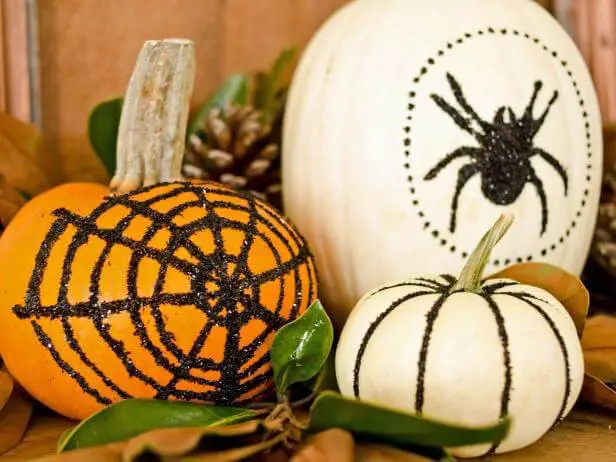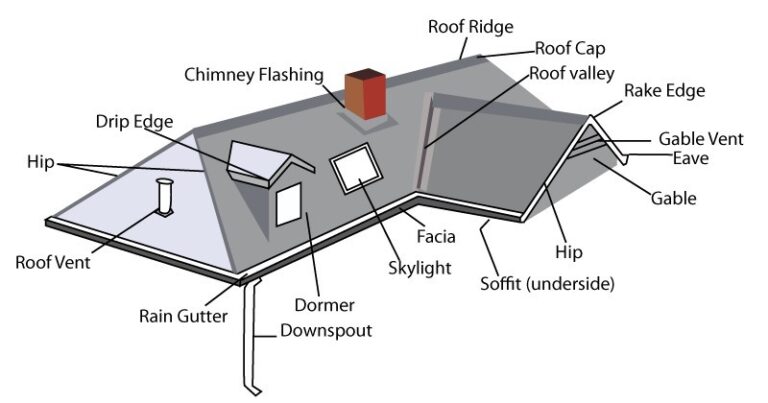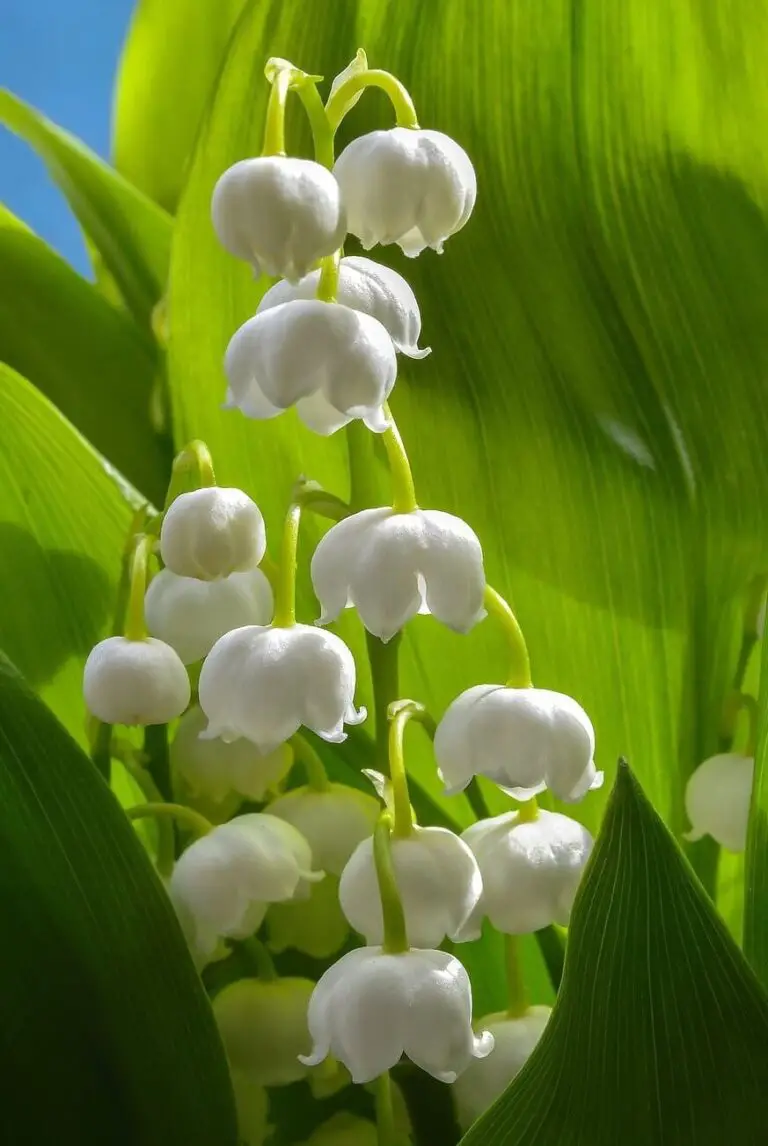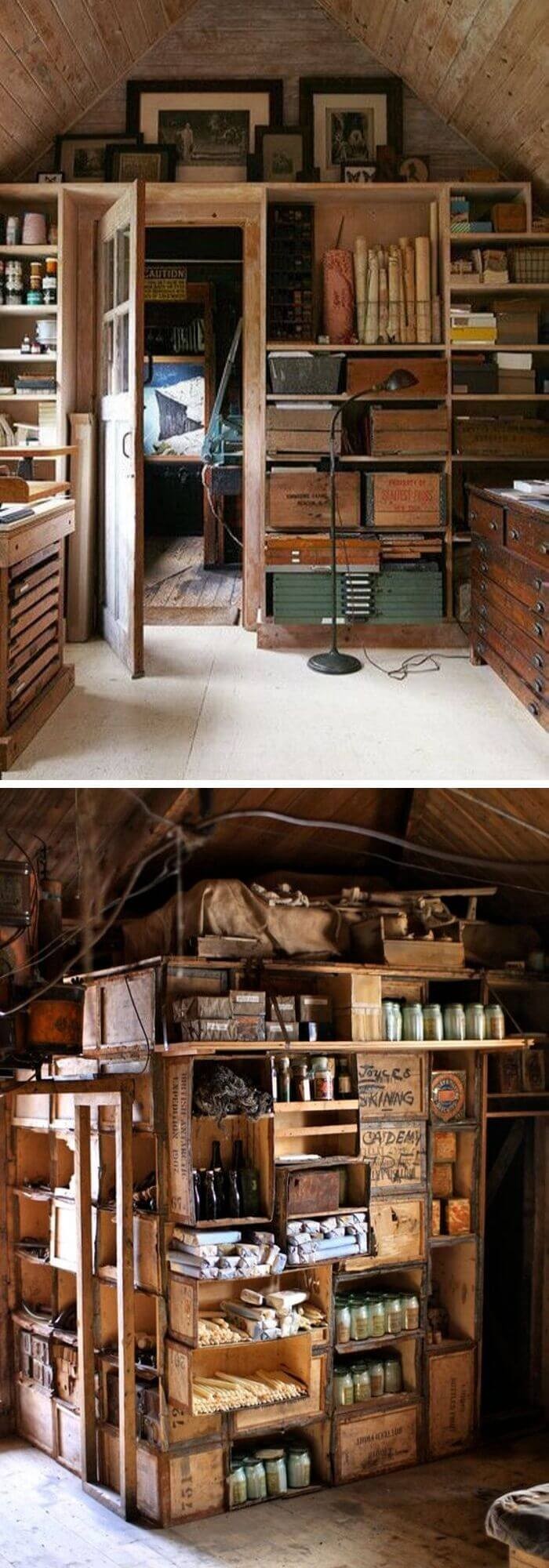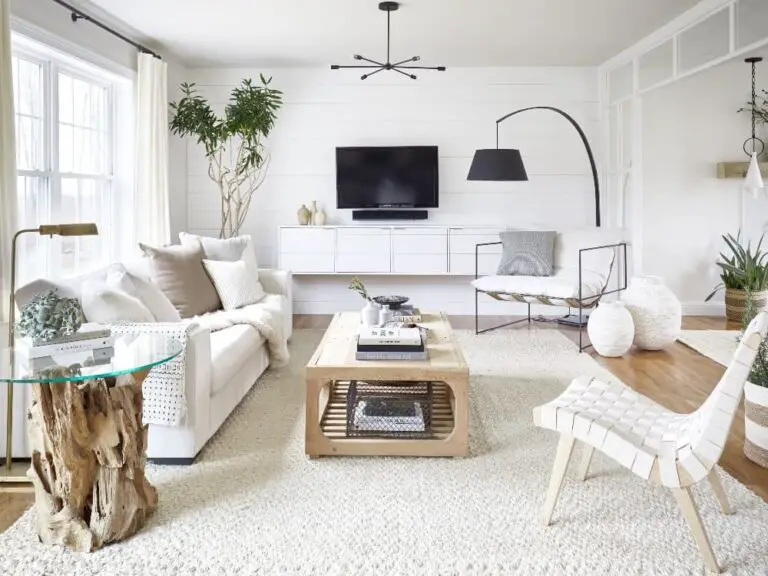50+ Stunning Cottage Style Garden Ideas To Create The Perfect Getaway Spot
If you’re searching for a way to transform your outdoor space into a serene and inviting retreat, look no further than the enchanting world of cottage gardens. This charming style, inspired by the whimsical gardens of rural cottages, is all about embracing informality and abundance. By combining a variety of plants, colors, and textures, you can create a unique and cozy oasis that feels as though it’s been nurtured to perfection.
Unlike more formal garden designs, cottage gardens exude a sense of spontaneity and playfulness, with flowers, herbs, and vegetables mingling together in harmony. The beauty of these gardens lies not just in their aesthetic appeal, but also in the way they blend functionality with whimsy. By crafting an outdoor space that’s as much about relaxation as it is about beauty, you can create a haven where you can unwind and connect with nature.
Understanding Cottage Garden Style
The concept of cottage gardens has its roots in rural England, where humble abodes once stood amidst lush green spaces. These gardens weren’t just aesthetically pleasing; they served as functional areas where crops like vegetables, fruits, and flowers coexisted harmoniously. This fusion of practicality and natural charm is the essence of the Cottage Garden Style. Unlike formal gardens that adhere to strict layouts, cottage gardens are revered for their relaxed, abundant, and varied character.
Definition and History
The charm of cottage gardens lies in their organic evolution, born from the practical needs of rural dwellers seeking to cultivate edible plants as well as add beauty to their surroundings. This unique gardening style is a testament to the resourcefulness of past generations, effortlessly merging functionality with aesthetics. Without a deliberate design, these gardens have grown into breathtakingly beautiful and practical spaces that thrive on their own natural harmony.
Key Features
In a cottage garden, the beauty lies in its effortless charm. This is a space where plants are free to grow as they please, resulting in a joyful jumble of colors and textures. The absence of rigid design rules allows for a relaxed, welcoming atmosphere that’s hard to resist. A key aspect of this style is abundance – every nook and cranny is filled with lush greenery and vibrant blooms, ensuring the garden remains lively all year round.
Perhaps most striking, however, is the diversity on display. A mix of flowers, herbs, and vegetables creates a rich tapestry that not only delights the senses but also attracts local wildlife.
The Role of Color, Texture, and Fragrance
In a cottage garden, sensory experiences converge to create a captivating atmosphere. The harmonious blend of color, texture, and fragrance entices not just the eye but also the sense of touch and smell, drawing visitors in with an inviting charm.
The symphony of hues, the interplay of leaf textures, and the intoxicating aromas combine to make the garden a sensory delight.
When selecting plants, gardeners consider not only their visual appeal but also their ability to contribute depth and dimension through foliage, flowers, and fragrance.
In this style of garden, color bursts forth in vibrant hues that evolve with the seasons. Texture adds an extra layer of visual interest, as varied plant forms and leaf types create a tactile experience. The air is filled with the sweet scent of blooming flowers and herbs, further enhancing the multisensory adventure.
Cottage gardens beckon you to immerse yourself in their beauty and bounty. They are spaces where nature takes the lead, full of surprises at every turn. This style is ideal for gardeners who cherish a garden that feels both lived-in and loved, where the beauty of the garden is matched by its functionality.
Planning Your Cottage Garden
Crafting a charming cottage garden necessitates a harmonious blend of aesthetics and horticultural expertise. While it’s tempting to simply plant your beloved blooms, a well-designed garden requires careful consideration to bring forth a haven of beauty and vitality. To begin, consider the following essential steps:
Assessing Your Space
Before selecting your new plants, take a moment to appreciate the unique characteristics of your garden space. A thorough understanding of the light it receives, the type of soil it has, and the available space will ensure that your chosen plants thrive in their new environment.
It’s essential to consider these factors because different plants have distinct requirements. For instance, some may need direct sunlight, while others prefer shade or filtered light.
Similarly, different soils can affect water drainage and nutrient availability, making it crucial to choose the right plants for your soil type. Additionally, knowing your space limits will help you plan plant locations effectively and avoid overcrowding.
To get started, observe the sun patterns in your garden to determine which plants are suitable.
Test your soil to select plants that will benefit from its characteristics, and use your available space wisely to create a harmonious and thriving garden environment.
Design Principles
As you design your cottage garden, aim for a harmonious blend of order and whimsy. This balance is key to creating a space that feels both structured and wild. To achieve this, think about crafting pathways that encourage exploration and plant beds that offer delightful surprises. The ultimate goal is to create a personal sanctuary, not just a visually pleasing display of flora.
To establish order in your garden, define separate spaces using pathways, hedges, or fences.
This will provide a sense of containment while still allowing for visual interest and movement throughout the space.
On the other hand, don’t be afraid to let whimsy take over by allowing plants to spill over paths, blend together in a colorful tapestry, and incorporate unexpected elements that add personality to your garden. By embracing both order and whimsy, you’ll create a unique and inviting space that reflects your personal style.
Choosing Plants
When it comes to planning your cottage garden, selecting the right plants can be the most thrilling aspect. This style of gardening is renowned for its eclectic mix of perennials, annuals, and climbers, which work together to create a lush, informal ambiance. To achieve this look, choose plants that thrive in your local climate and reflect the relaxed charm of a cottage garden.
In terms of plant types, perennials like lavender, peonies, and hostas provide structure and return year after year, while annuals such as marigolds, cosmos, and zinnias add vertical interest and frame spaces. Climbers like clematis, roses, and honeysuckle also contribute to the vertical layering of your garden.
By combining these elements thoughtfully, you can create a cottage garden that not only looks stunning but also feels like a personal haven.
Remember, the best gardens evolve over time, responding to their environment and the gardener’s evolving tastes. So, don’t worry if everything isn’t perfect from the start – gardening is a journey, and creating your cottage garden is all part of the fun.
Essential Elements of Cottage Style Gardens
Crafting a charming cottage-style garden requires a thoughtful approach, extending beyond simply planting flowers. To achieve this idyllic atmosphere, several key elements must be considered. Let’s delve into the crucial components that bring this style to life.
Cottage Garden Plants
The cornerstone of any cottage garden is its thoughtfully selected plant palette. Species such as roses, foxgloves, and lavender are carefully chosen for their unique characteristics, which not only add visual interest and fragrance but also create a sense of structure and continuity throughout the seasons. These plants are instrumental in shaping the garden’s overall aesthetic, from its elegant charm to its wild, natural allure.
A closer look at each plant reveals the key role they play in this charming setting: roses bring elegance with their varied colors, sizes, and fragrances; foxgloves provide height and a whimsical appearance with their tall spikes of tubular flowers; and lavender offers a sweet fragrance and attracts pollinators with its purple blooms and silver-green foliage. Together, these plants work in harmony to create a truly enchanting cottage garden experience.
Paths and Walkways
Paths and walkways in a garden play a more significant role than just providing a means of navigation. They serve as a guide, encouraging visitors to explore and discover the beauty that surrounds them. By incorporating natural materials such as gravel, stone, or brick into their design, these pathways can add a rustic charm to the garden, fostering a deeper connection with nature.
The choice of material should be thoughtful, taking into consideration the overall aesthetic and style of the garden and its adjacent house. A cohesive look can be achieved by selecting materials that complement each other. In terms of design, meandering paths are ideal, as they create a sense of mystery and invitation, encouraging visitors to venture further into the garden and uncover its secrets.
Fencing and Gates
Beyond defining physical boundaries, fences and gates play a crucial role in shaping the narrative of a garden. In a cottage garden setting, picket fences painted in soft whites or natural wood tones, paired with decorative gates, work together to create a warm and inviting atmosphere. Fences not only provide privacy but also add charm and frame the surrounding space, while gates serve as an entrance point or transition zone, enticing visitors to enter and explore further.
The aesthetic contributions of these elements are multifaceted, elevating the overall experience of the garden.
Garden Structures
Arbors, trellises, and pergolas serve as more than just structural components – they provide crucial support for climbing plants, allowing you to create lush living walls and ceilings. These features add depth, height, and visual interest to your garden, making it a more dynamic and captivating space. These structures also play a significant role in defining the purpose of specific areas within your garden.
Arbors can function as focal points, drawing attention to an inviting entryway or cozy nook. Trellises can help hide unsightly views while adding vertical interest, while pergolas offer shaded retreats that double as architectural features. Incorporating these elements into your garden design will help you achieve the quintessential charm of a Cottage Style Garden – a harmonious blend of formality and wildness.
By embracing the beauty of structure and foliage, you’ll create a space that feels both carefully curated and delightfully carefree.
Adding Personal Touches
Transforming your Cottage Style Garden into a truly one-of-a-kind oasis is all about incorporating personal touches that reflect your personality while also elevating the space’s charm and appeal. By focusing on decorative details, wildlife attraction, and seasonal highlights, you can add layers of depth and character to your garden, making it a true reflection of your unique style.
Decorative Details
Transforming your garden into a unique and inviting space can be achieved by incorporating decorative elements that add character, visual interest, and functionality. These items not only serve as focal points but also enhance the overall aesthetic and theme of the garden.
The addition of garden ornaments, birdbaths, and rustic furniture can have a significant impact on the ambiance and usability of your outdoor space.
Ornaments bring personality to the garden while birdbaths attract wildlife, creating a sense of activity and life. Rustic furniture provides cozy areas for relaxation and enjoyment.
Incorporating these decorative elements is essential for creating a personalized and inviting garden that reflects your personal style and complements its natural surroundings.
Wildlife Attraction
Incorporating wildlife-friendly elements into your garden design is not only a delight for the senses, but also essential for the survival of our planet’s precious pollinators. By thoughtfully selecting plants and features that attract birds, bees, and butterflies, you can create a thriving ecosystem that nurtures these creatures and supports their vital role in plant reproduction.
To entice feathered friends to your garden, consider installing bird feeders and nesting boxes, which provide sustenance and shelter. Meanwhile, native flowers and insect hotels will attract bees and butterflies, offering them the resources they need to thrive. By taking these simple steps, you’ll not only be treated to a symphony of colors and sounds, but also contribute to the overall health and well-being of your local ecosystem.
Seasonal Splendor
To maintain a dynamic and vibrant garden throughout the year, it’s crucial to select a diverse range of plants that bloom at various times. This strategic approach enables you to create a visual feast that offers something new and exciting in every season. By incorporating plants with distinct flowering periods, you can ensure your garden remains a source of pleasure and inspiration regardless of the time of year.
Spring: Crocus, Tulips, Daffodils – The first signs of life after winter’s chill, these early bloomers bring warmth and color to the garden. Their vibrant hues and delicate petals create a sense of renewal and promise.
Summer: Roses, Lavender, Foxgloves – As the days lengthen and temperatures rise, this trio of flowering plants takes center stage.
With roses providing fragrance and structure, lavender offering its soothing scent and foxgloves adding height and visual interest, your garden is a true showstopper during the peak growing season.
Autumn: Japanese Anemone, Sedum, Chrysanthemum – As the seasons transition and days grow shorter, these plants take on starring roles. With their rich colors and varied textures, they add depth and dimension to the garden, creating a cozy atmosphere that invites relaxation.
Winter: Holly, Winter Jasmine, Evergreens – Even in the dormant season, your garden can retain its charm with these hardy, evergreen plants providing structure and year-round interest. The bright berries and delicate flowers of holly and winter jasmine add pops of color to an otherwise quiet landscape.
Cottage Garden Inspirations
For a Cottage Style Garden, inspiration can strike from diverse angles. You might find yourself drawn to real-world examples, cleverly adapting your design to suit your local climate and environment, or masterfully maximizing the potential of small spaces through container gardening. Ultimately, it’s an open-ended invitation to get creative with your garden, exploring a rich tapestry of ideas and possibilities.
Real-Life Examples
While browsing through cottage gardens, one can’t help but be inspired by the unique features and charming ambiance that these gardens exude. The diversity of plantings, paths, and seating areas all come together to create a warm and inviting space. For instance, lush flower beds burst with color and texture, offering endless ideas for plant combinations and layouts. Meanwhile, meandering garden paths crafted from natural materials draw the eye and invite exploration.
And let’s not forget about the cozy seating areas, where rustic benches and chairs are nestled among the greenery, providing the perfect spot to relax and unwind.
Adapting to Different Climates
Cottage gardens can flourish across a range of climates, from temperate regions with moderate temperatures to warmer zones. The secret to success lies in selecting plants that thrive in your specific area’s conditions. When it comes to cool climates, prioritize plants that are tolerant of cooler temperatures and can withstand frost. For warm climates, focus on drought-tolerant species that can handle the heat and intense sunlight.
Container Gardening
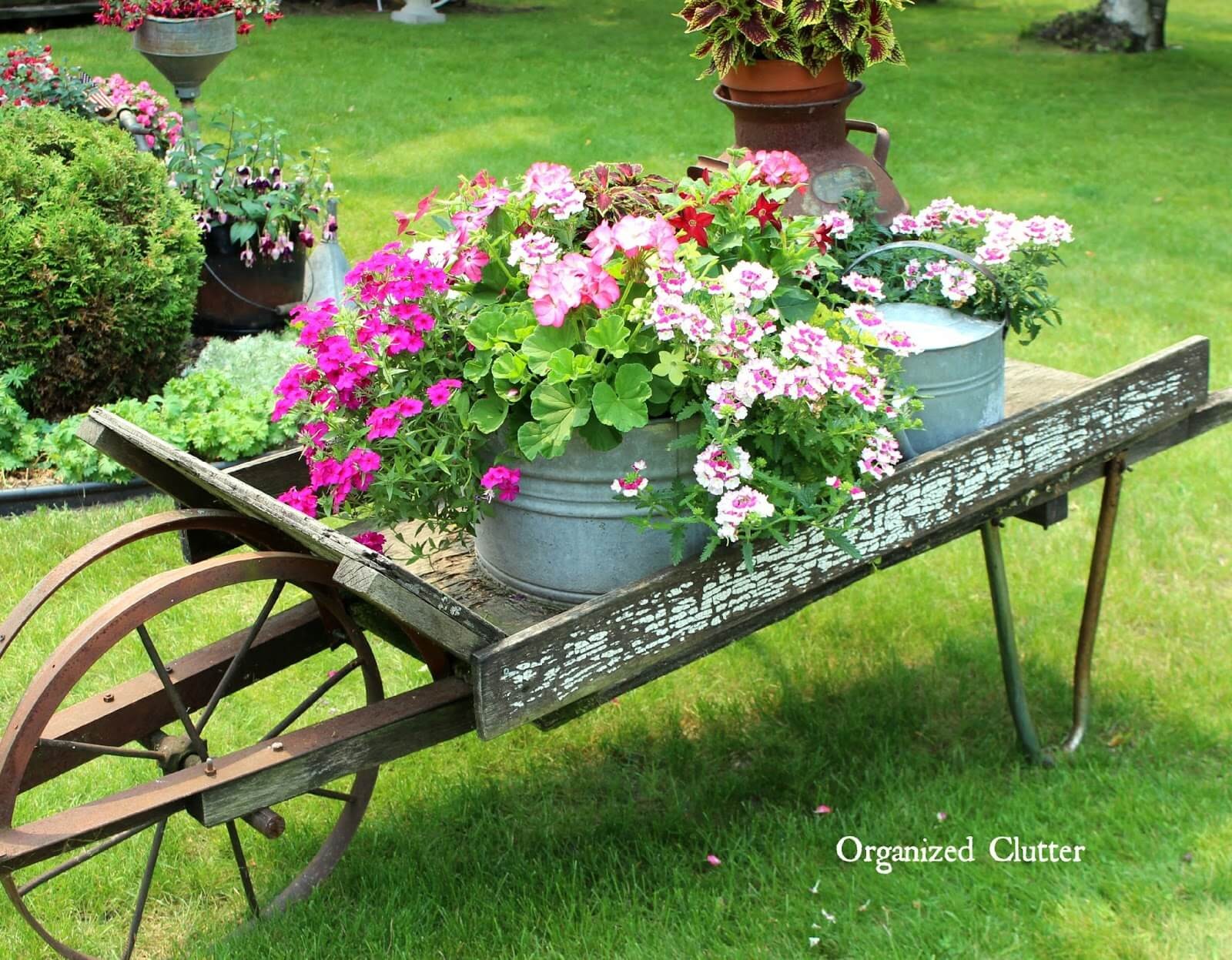

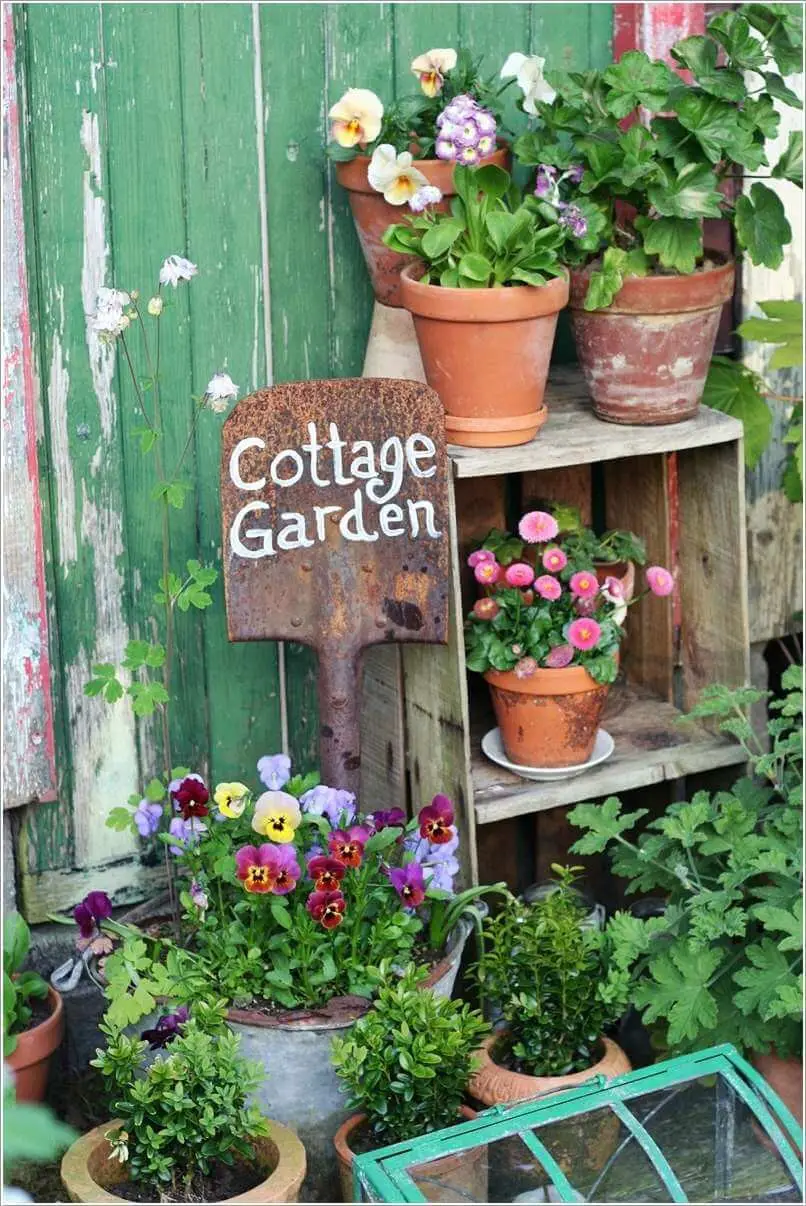
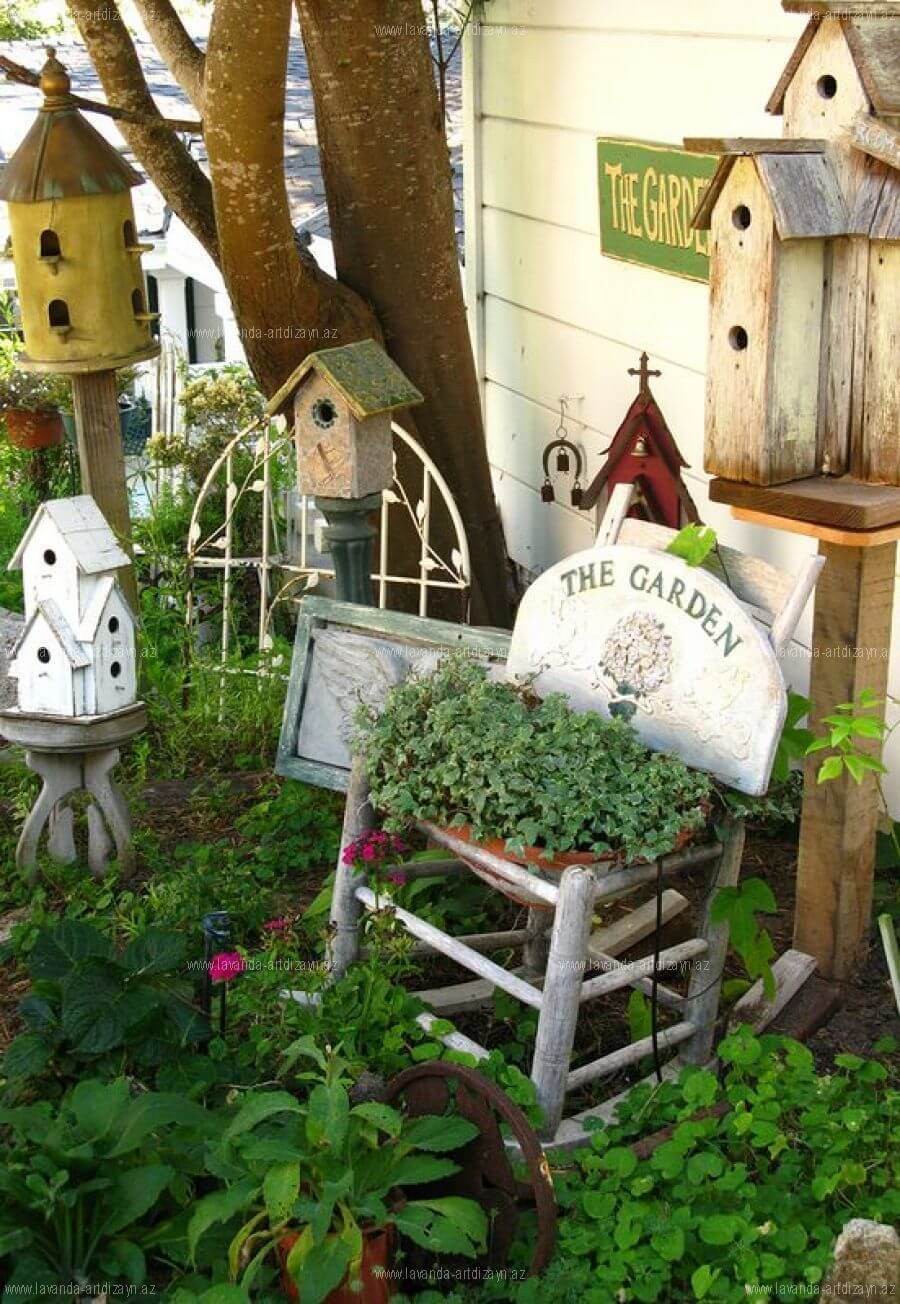
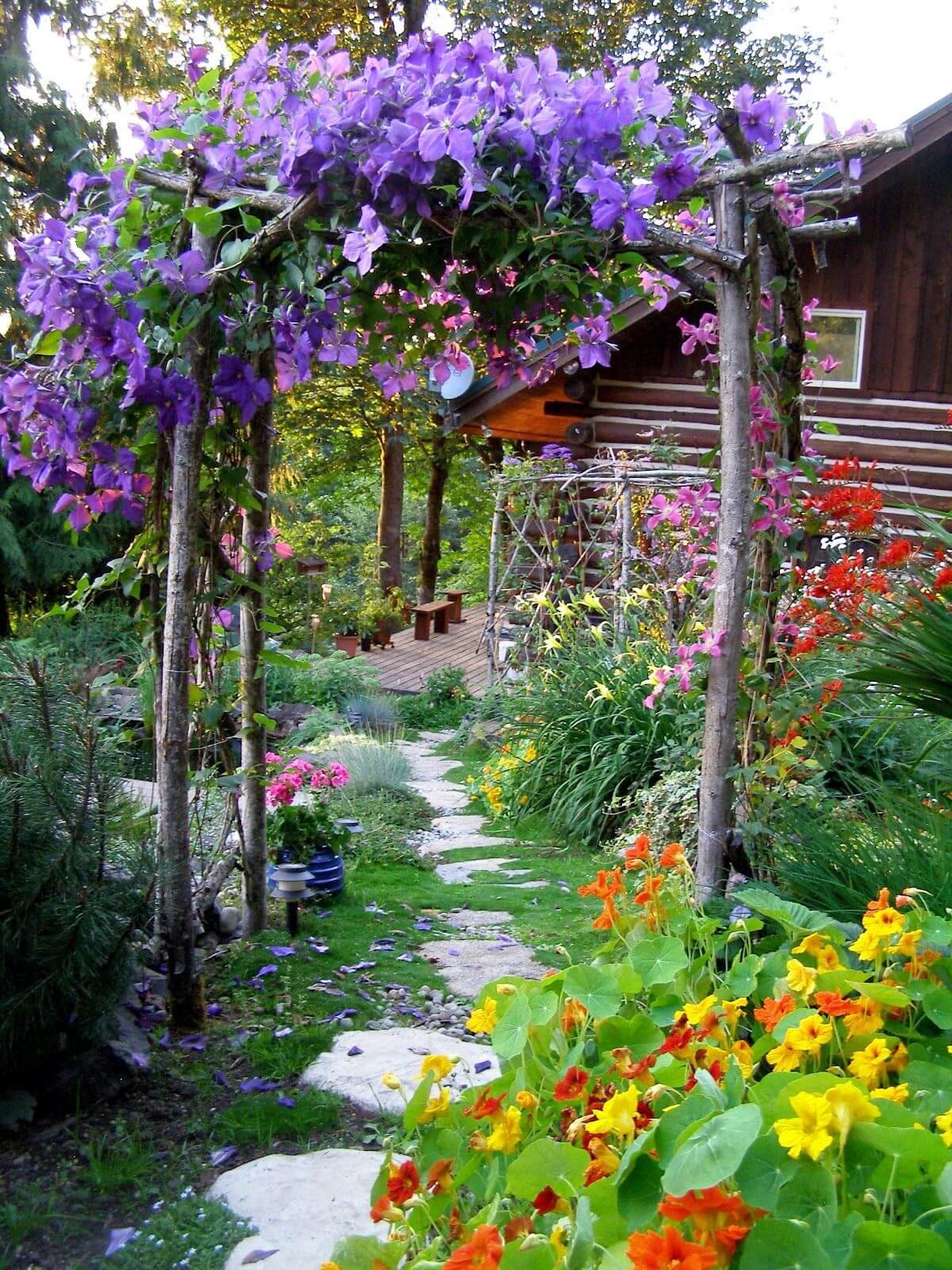
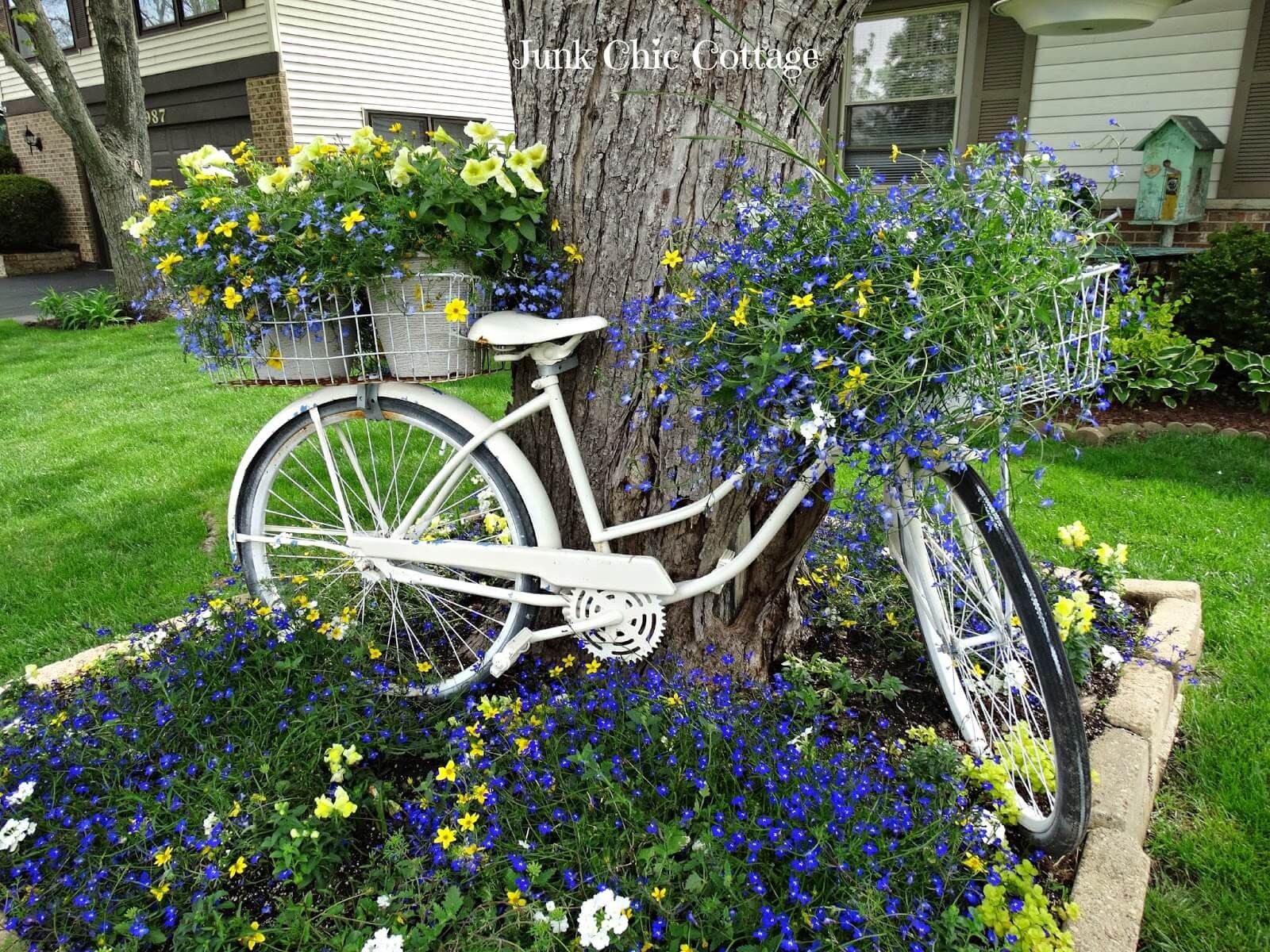
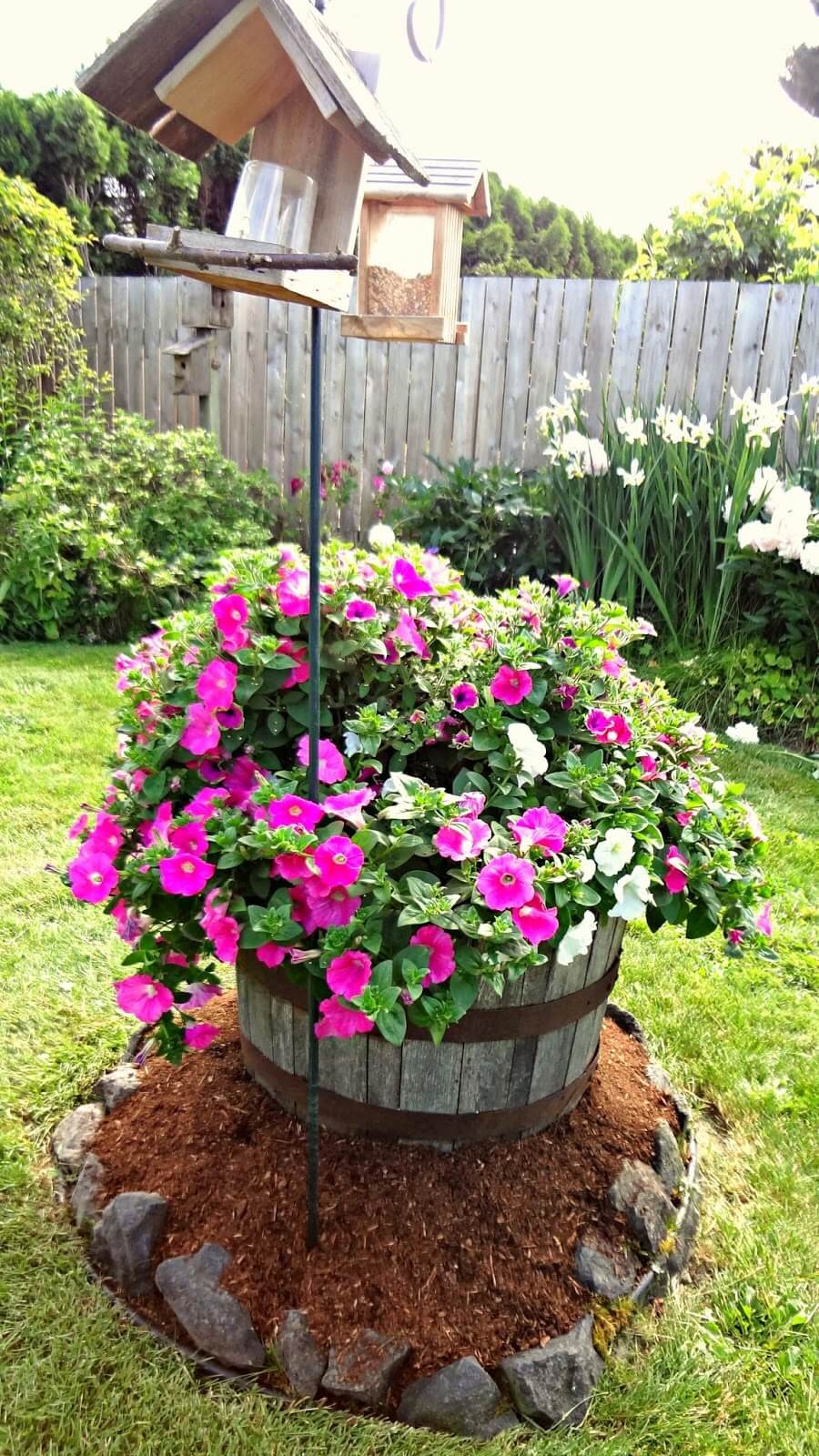
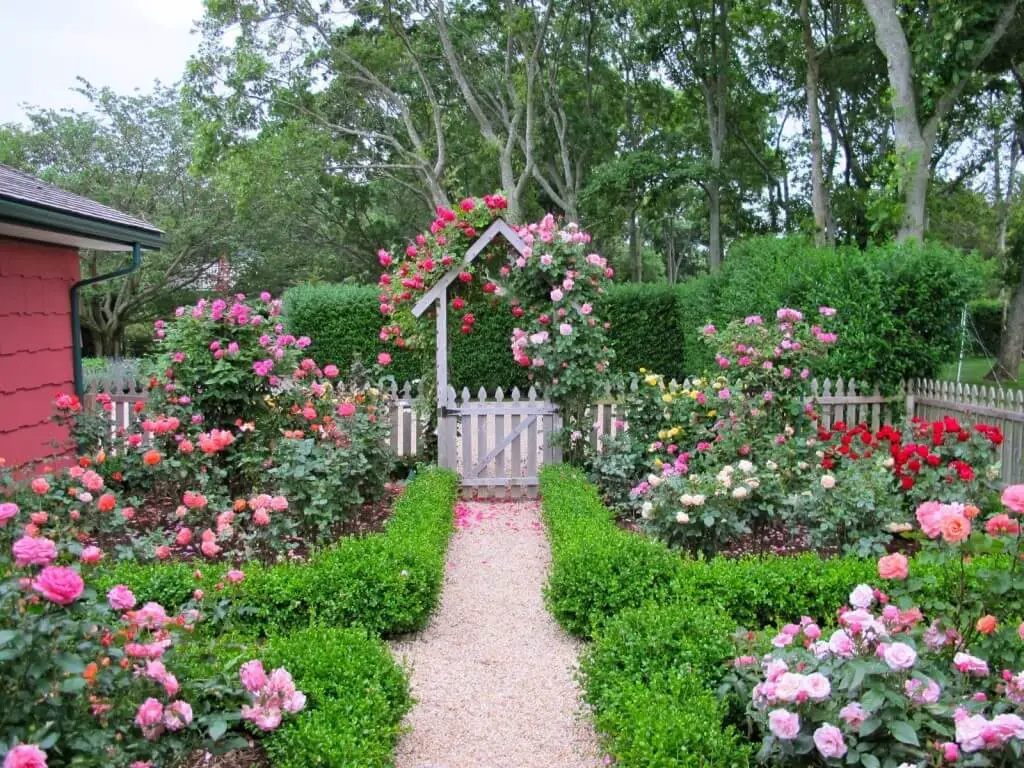
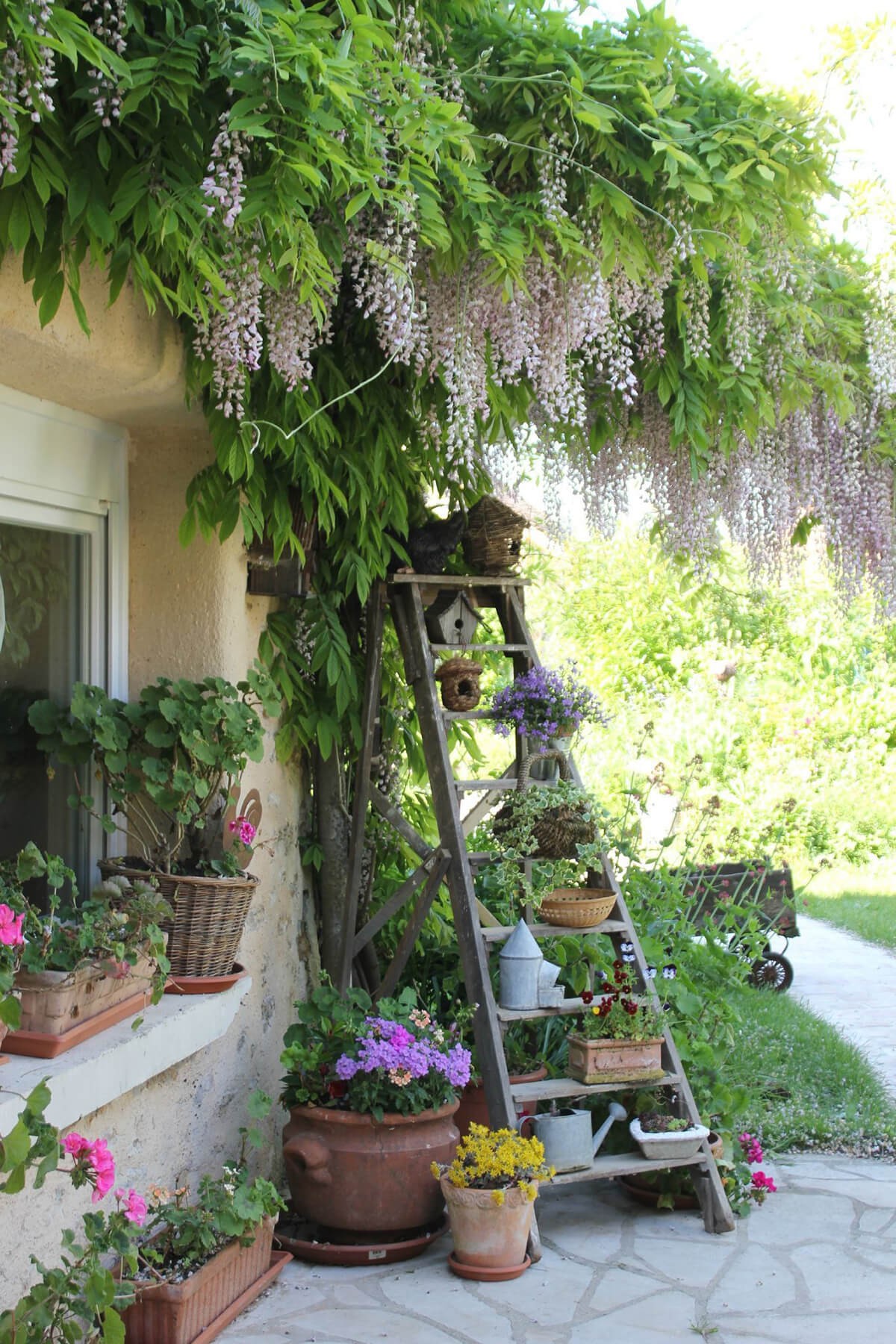
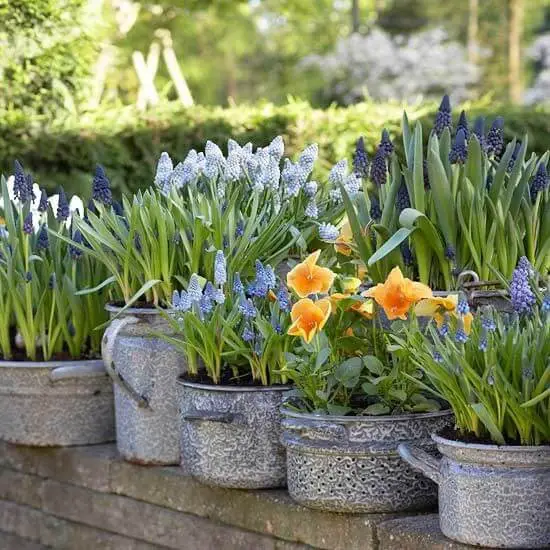
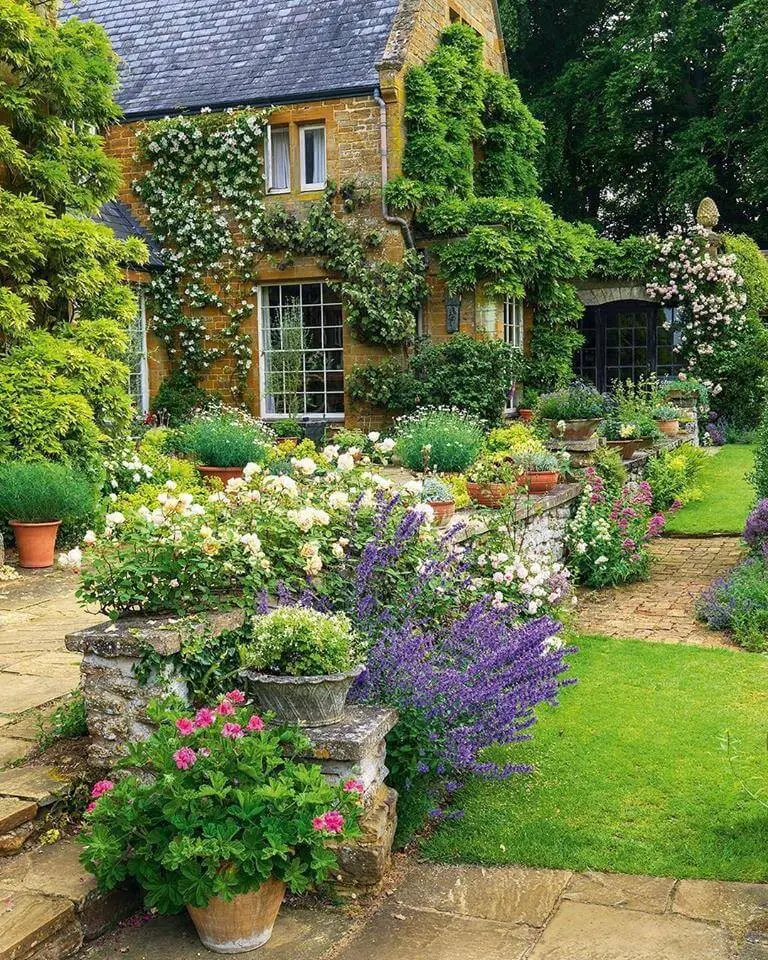
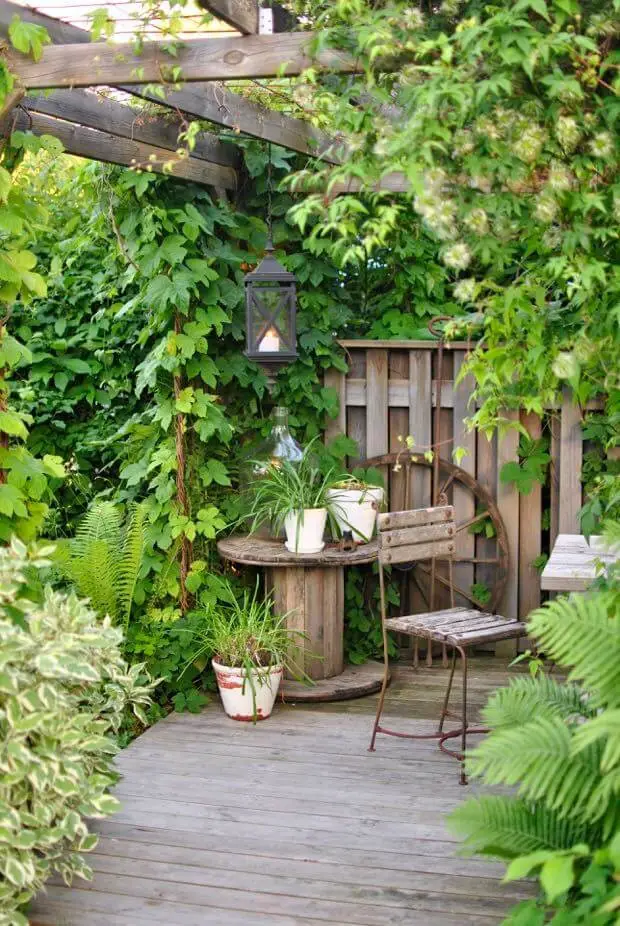
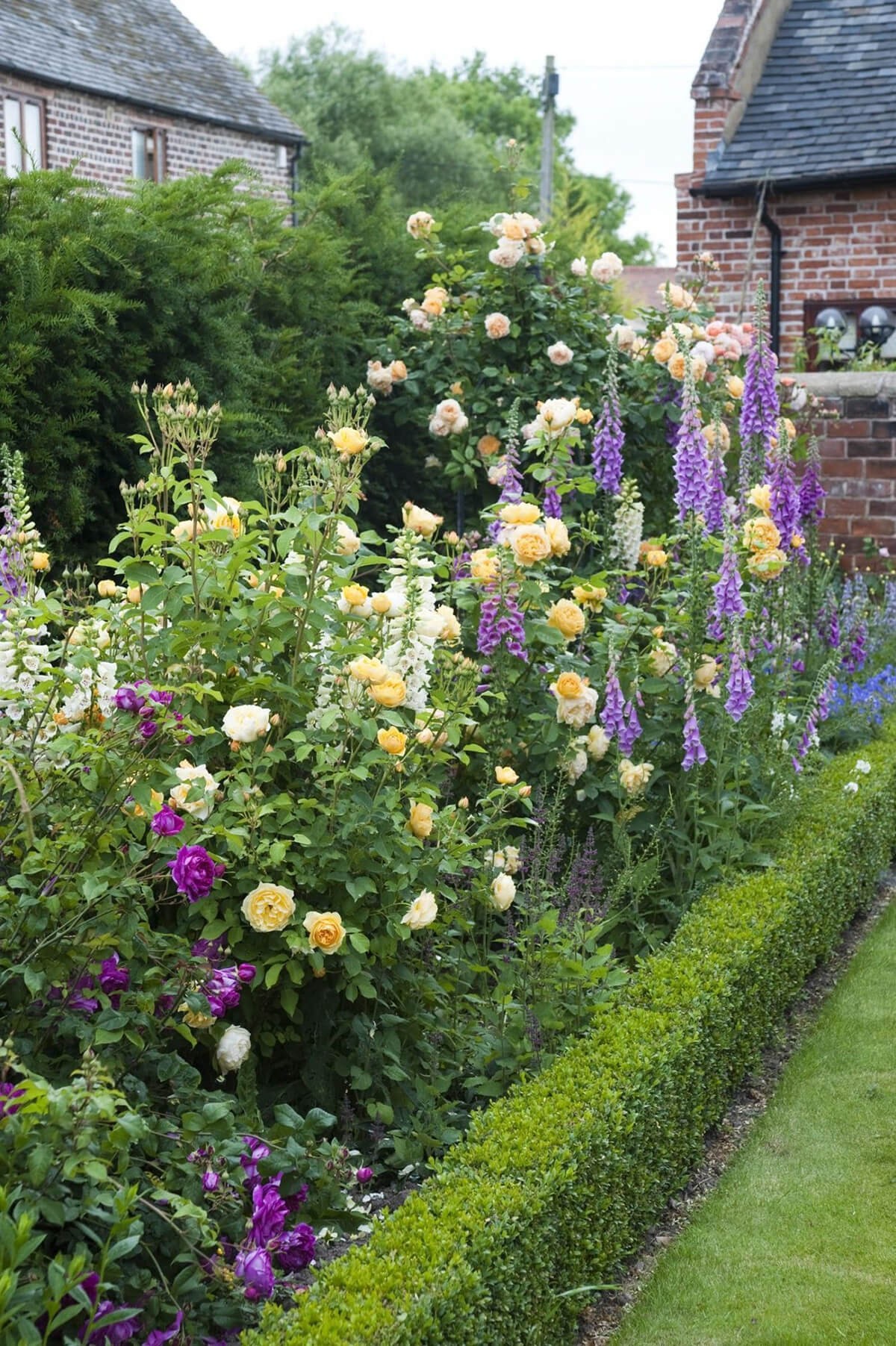
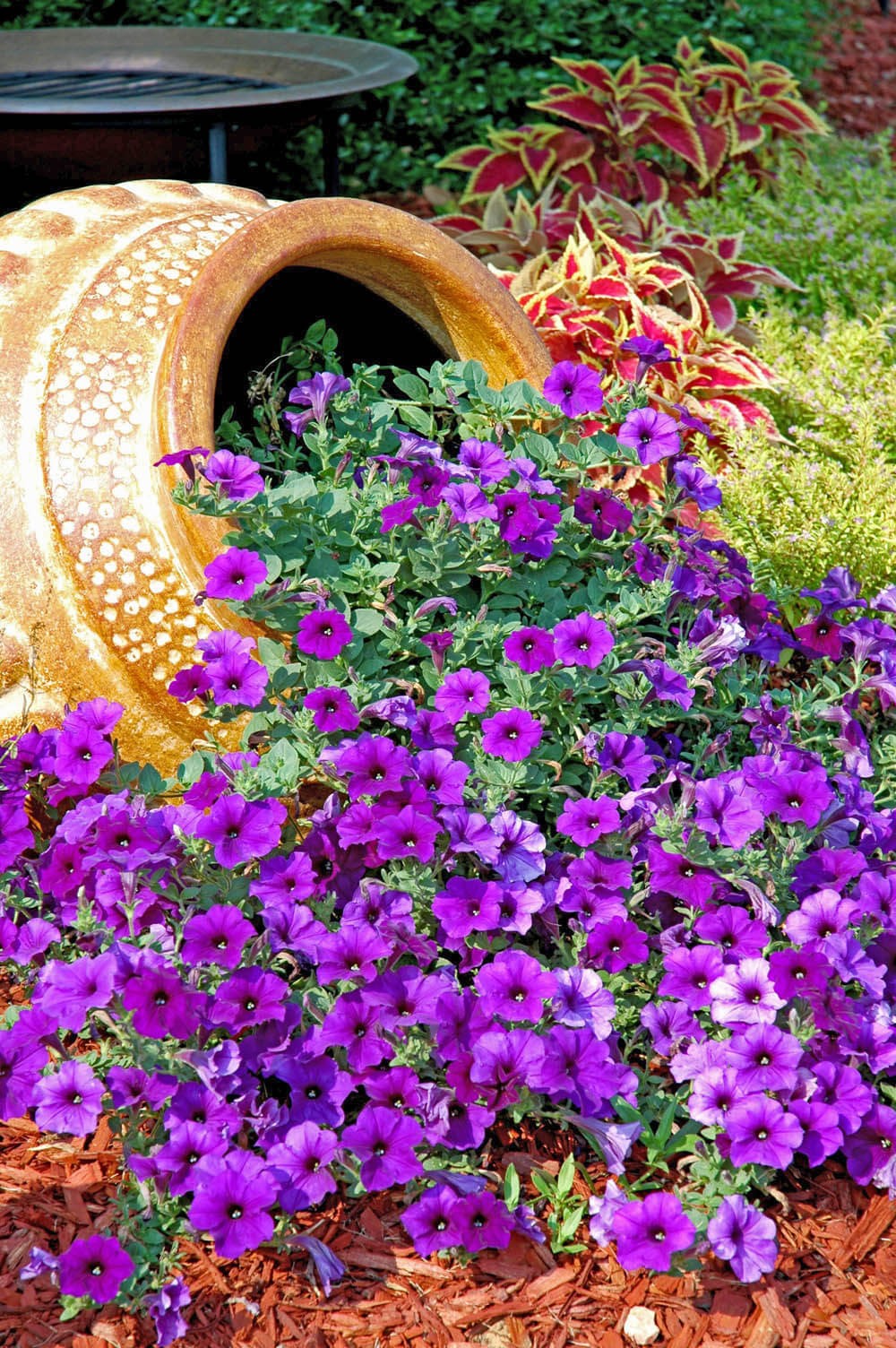
While a full-fledged garden may not be feasible for everyone, the essence of cottage gardening can still be achieved through the strategic use of containers. This approach allows you to bring the charm and character of a cottage garden to small or urban spaces, such as patios, balconies, or compact yards.
The key to successfully implementing a container-based cottage garden lies in selecting the right pots and planters, filling them with high-quality potting mix, and strategically positioning them to optimize light exposure. By doing so, you can overcome soil issues that may be present in your space, and enjoy the flexibility of moving containers around to accommodate changing seasons or personal preferences.
Ultimately, the beauty of cottage gardening lies not just in its aesthetic appeal, but also in its ability to connect us with nature and reflect our unique personalities. Whether you’re working with a small patio or a sprawling yard, the principles of container-based cottage gardening can be applied to create a space that is truly your own.
Tiered Potted Roses in Planters

Serene Fountain Corner with a Bench
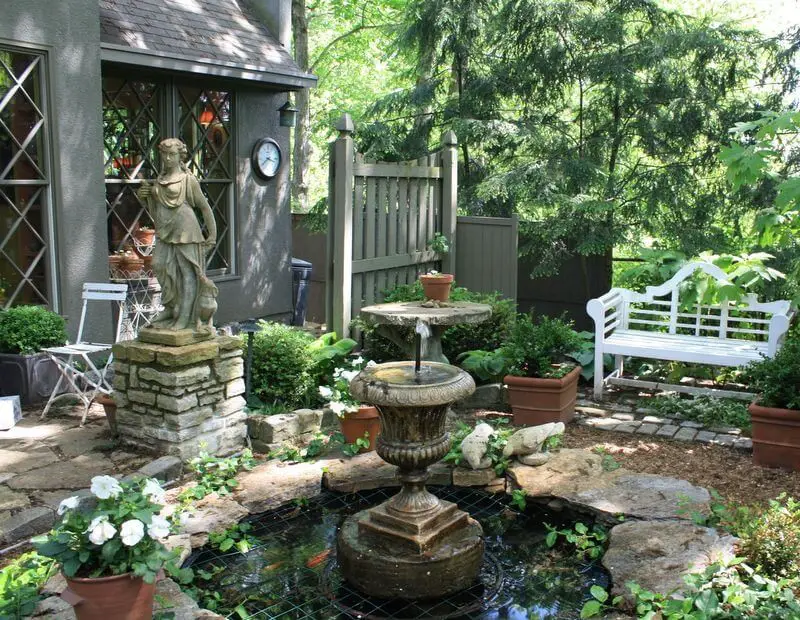
Paths in Cottage Style Garden Ideas
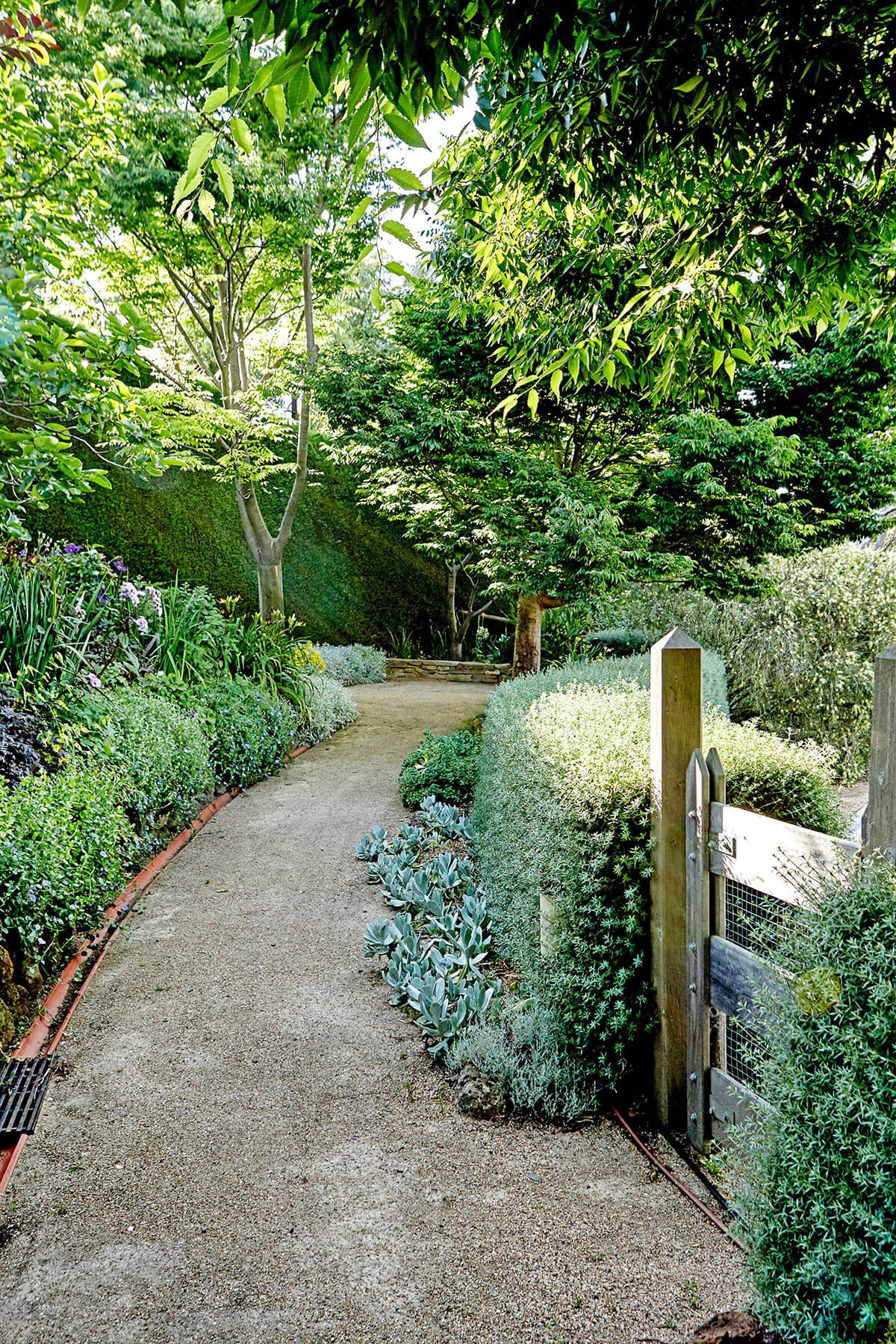


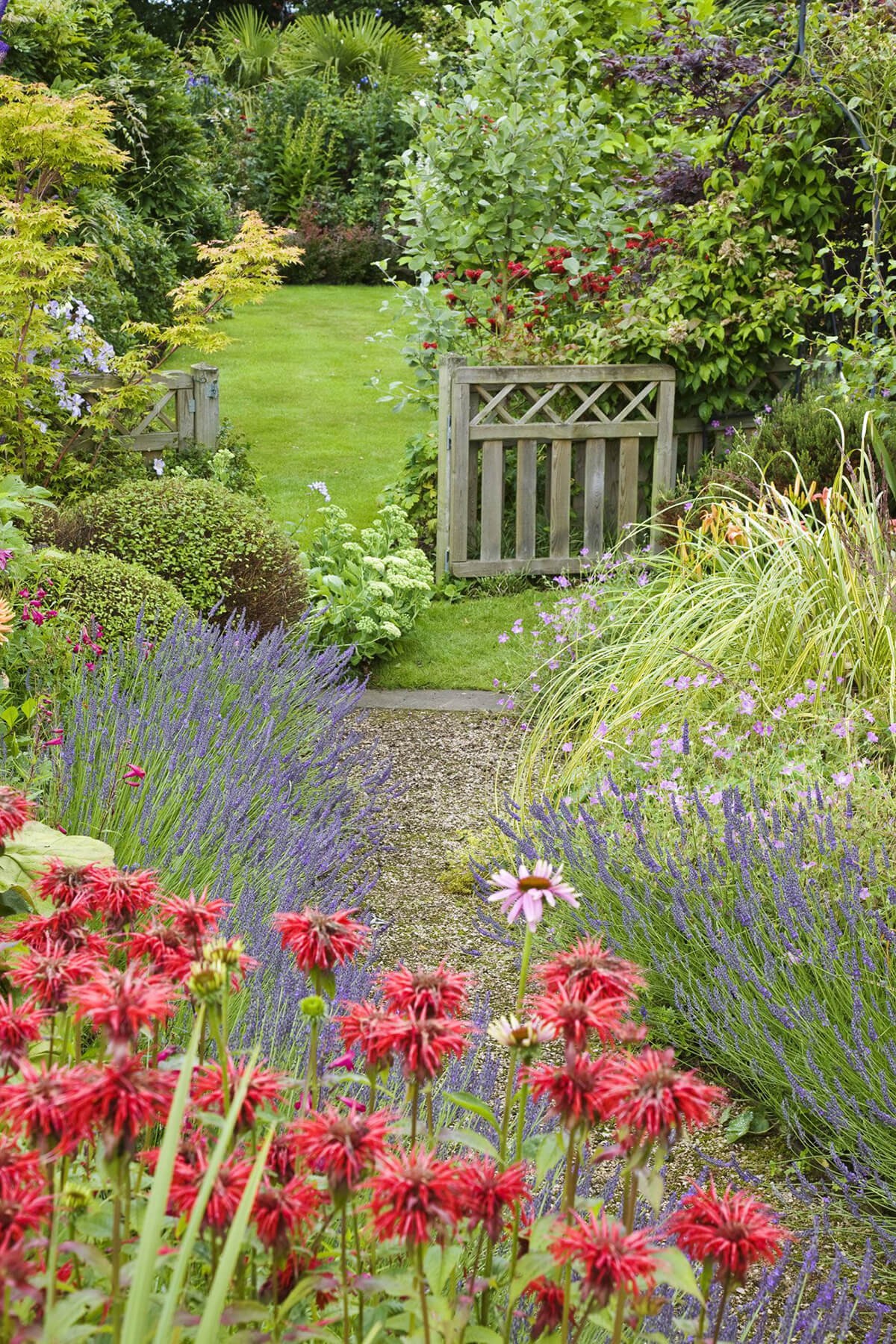

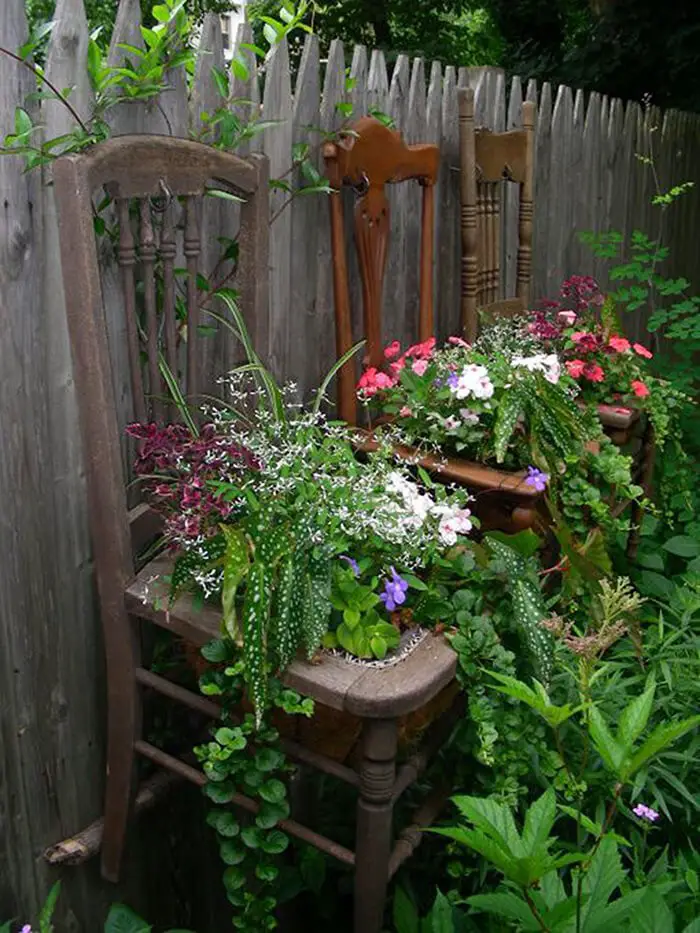


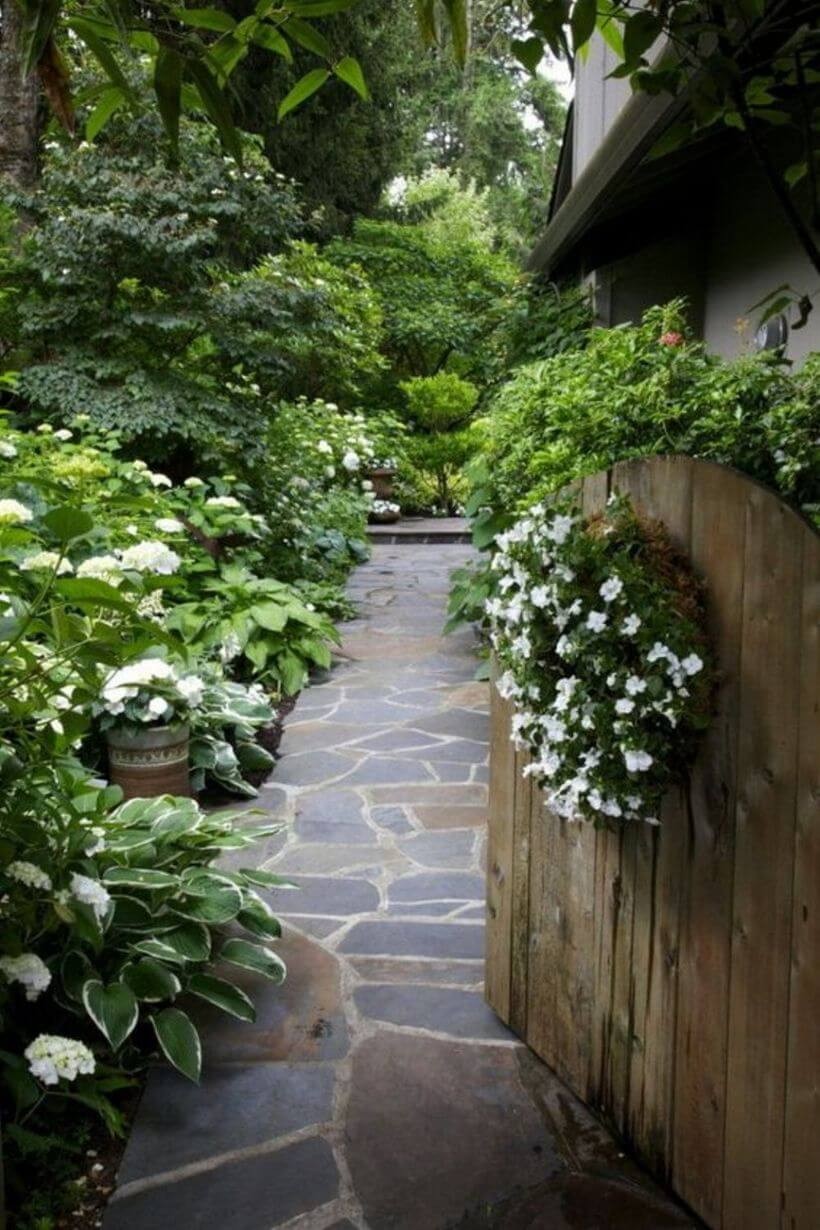

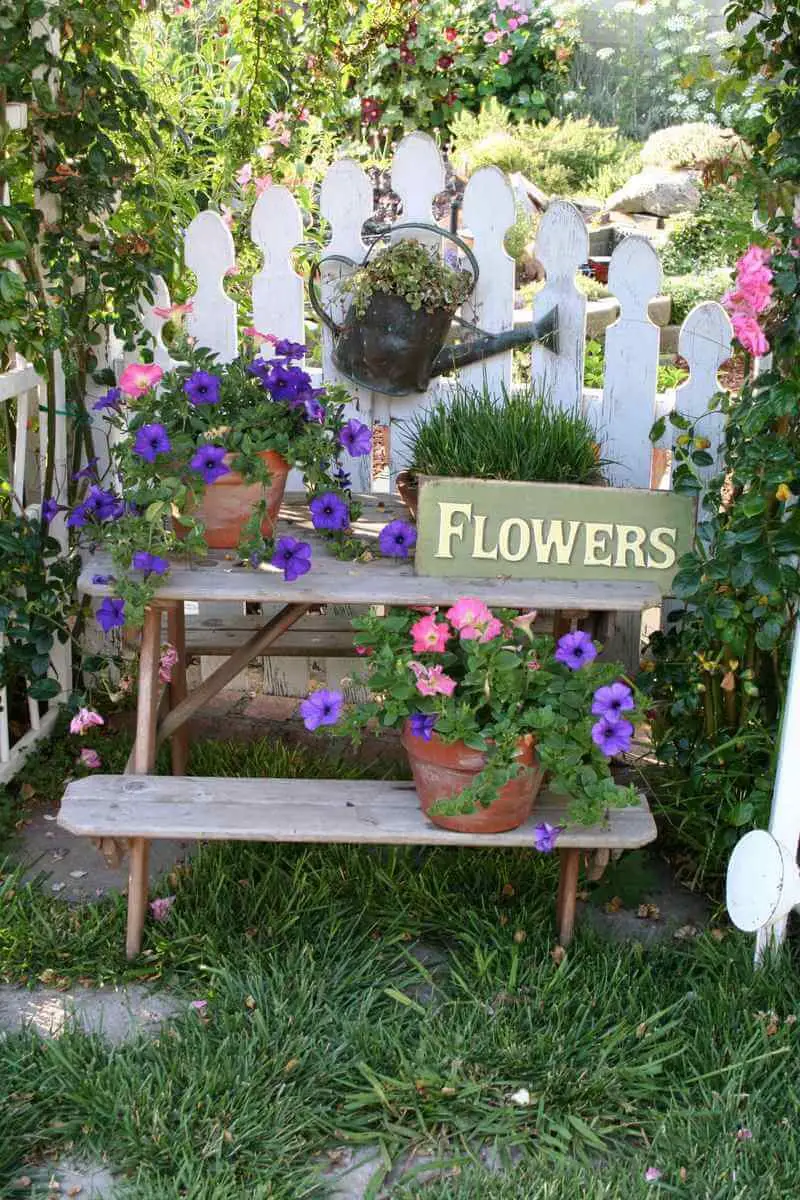
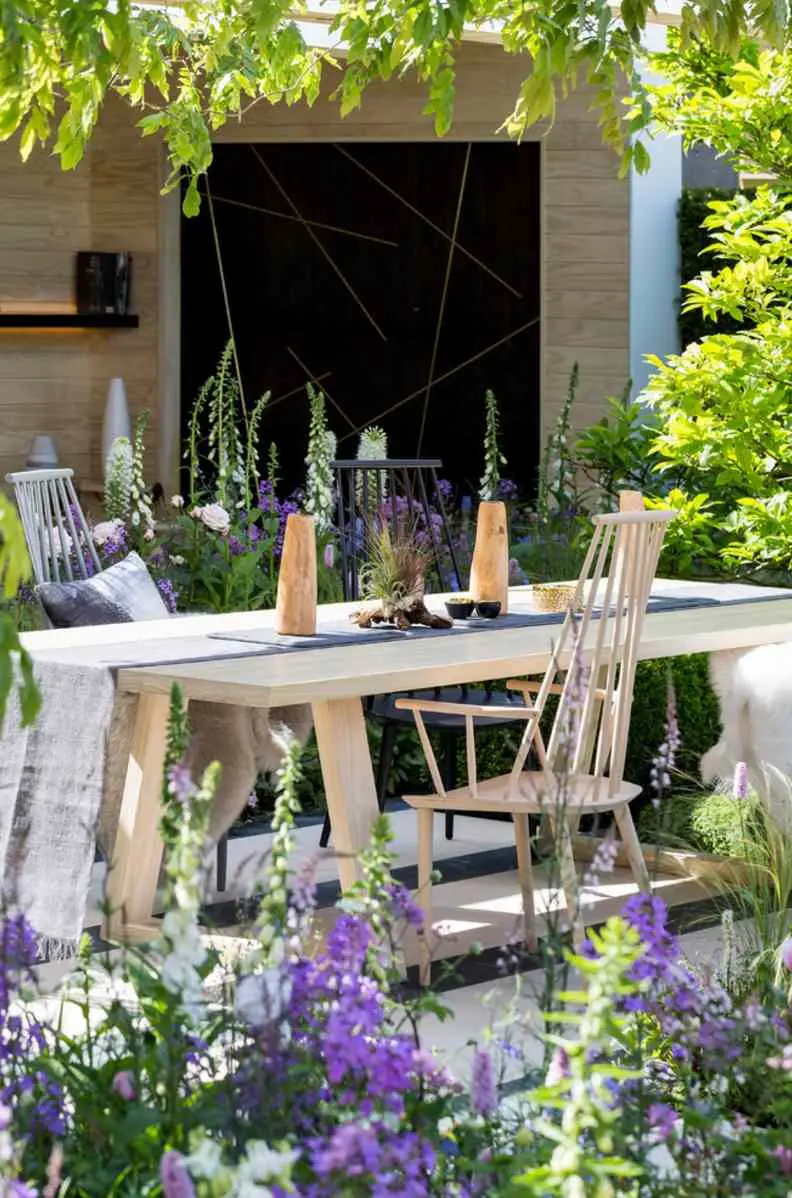
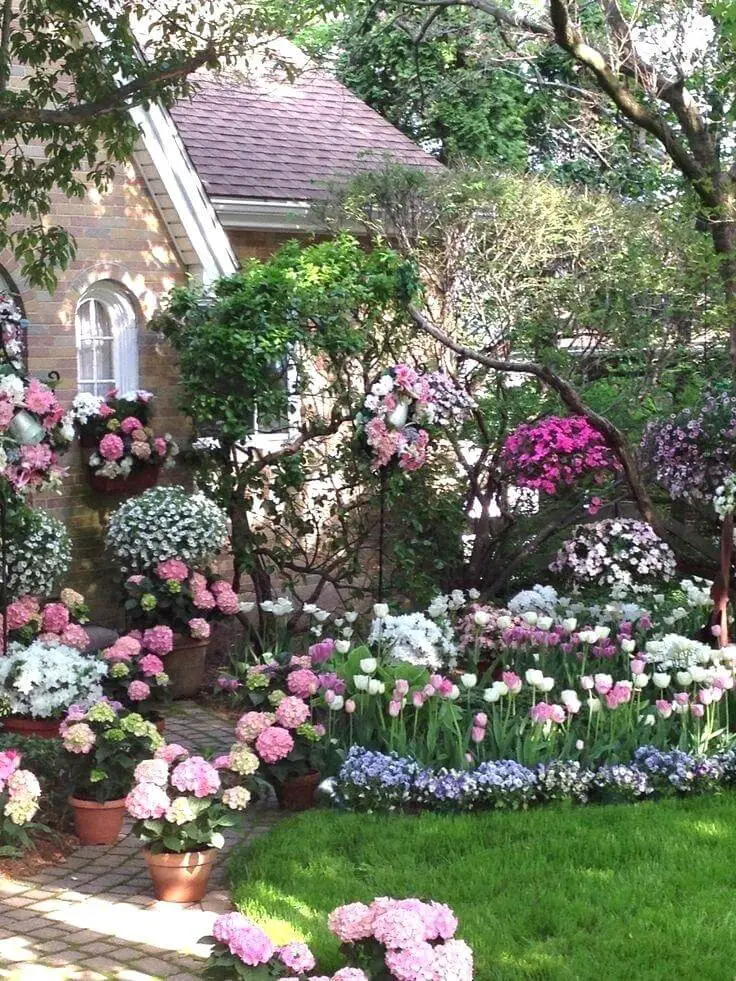
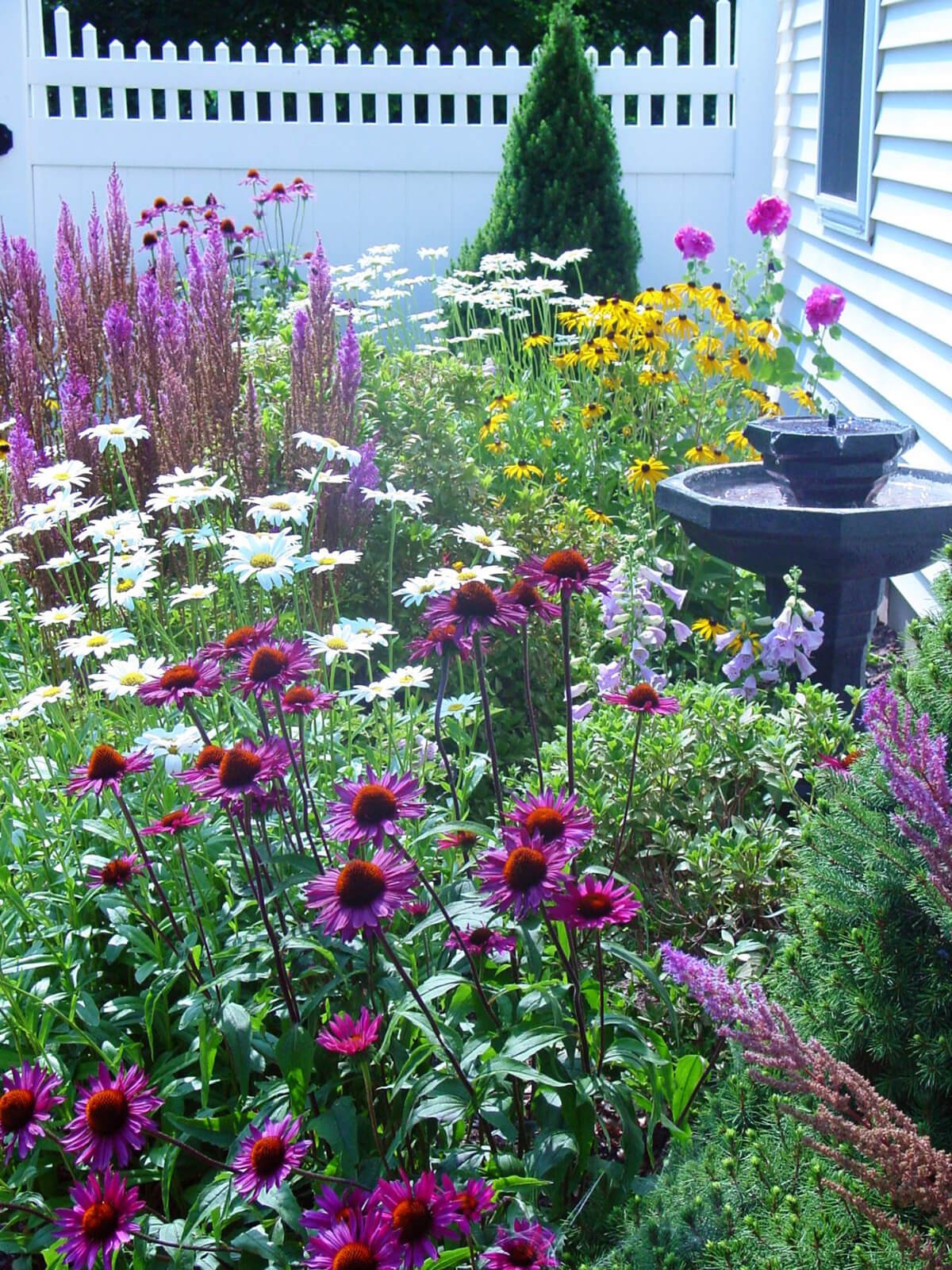
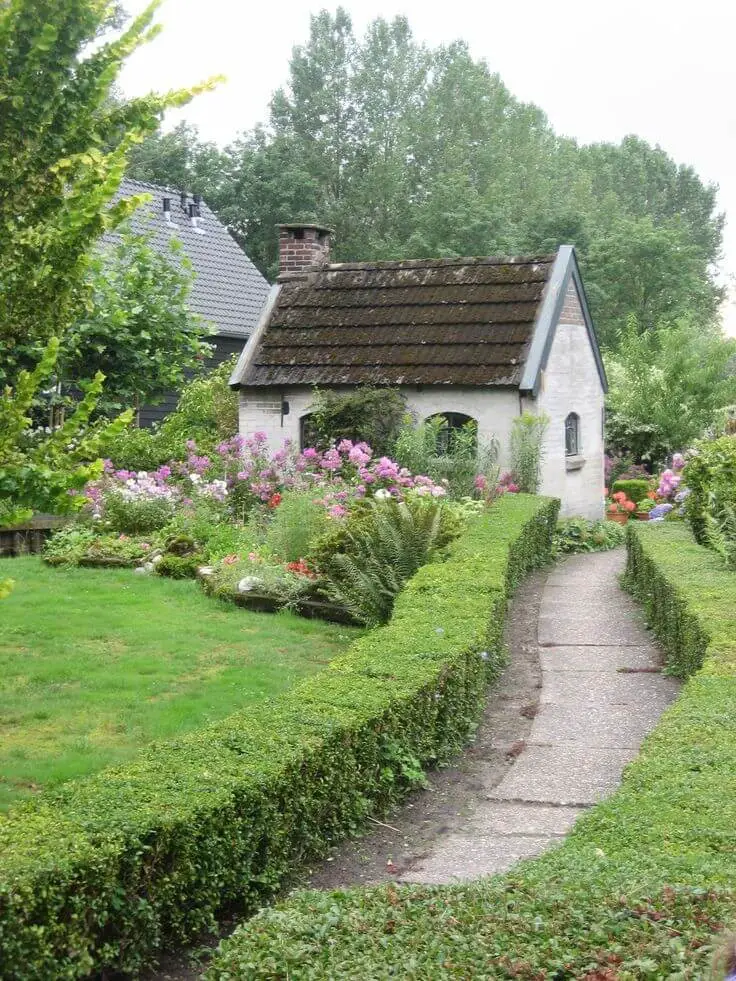
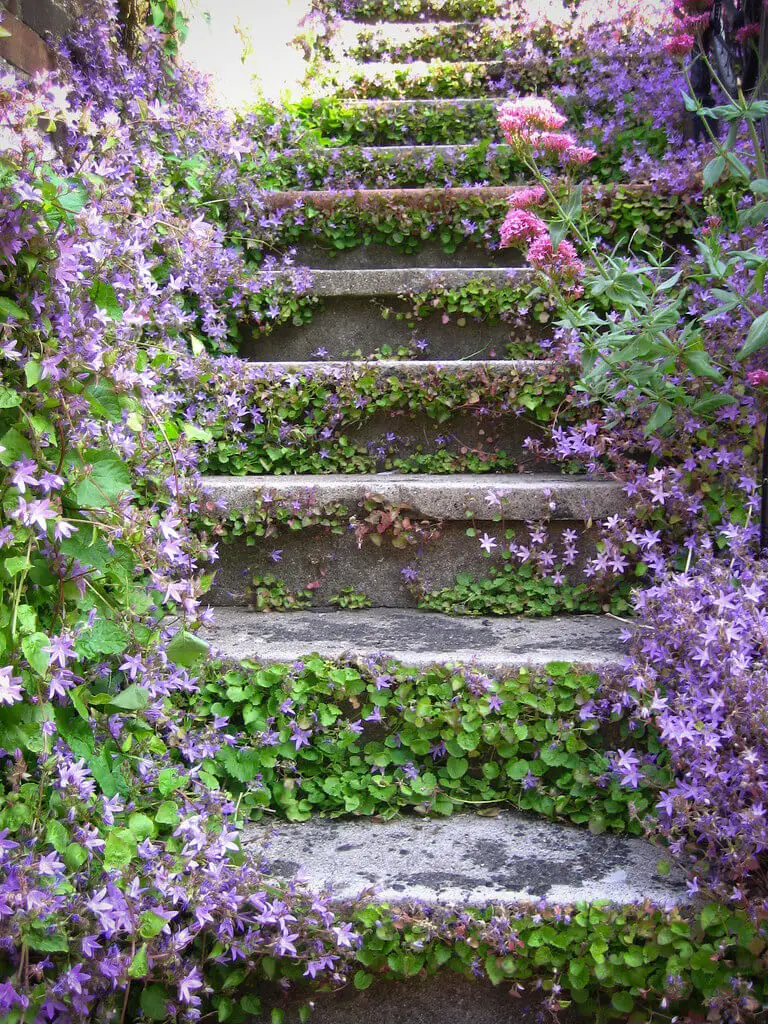
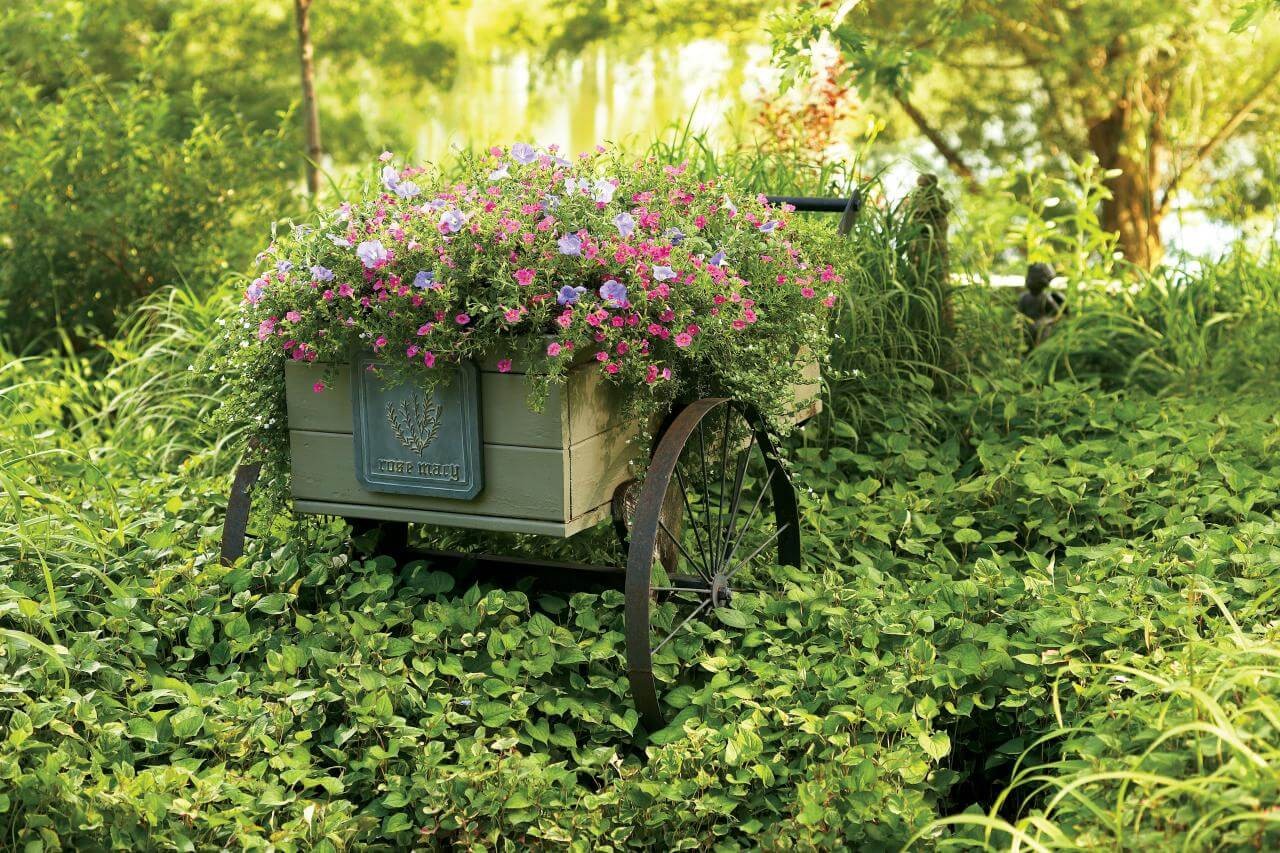
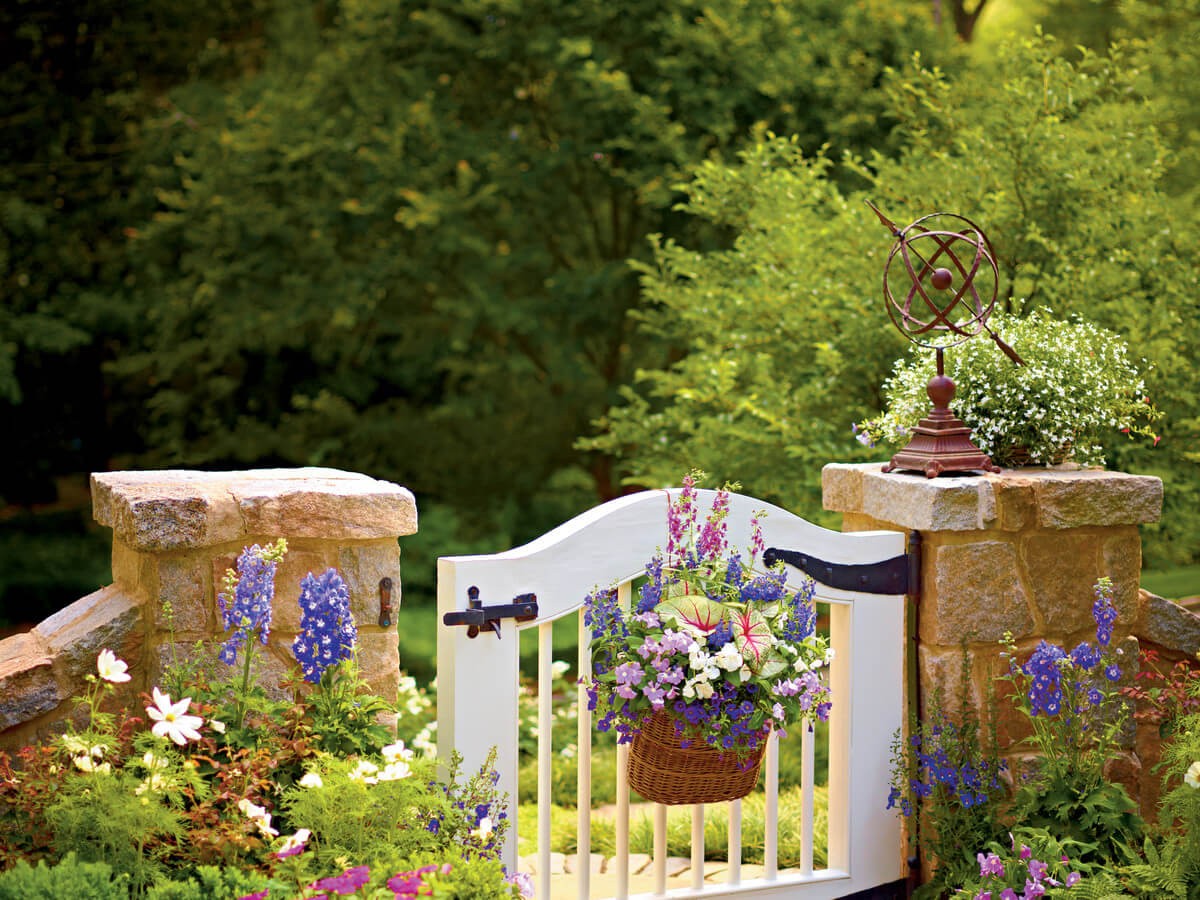
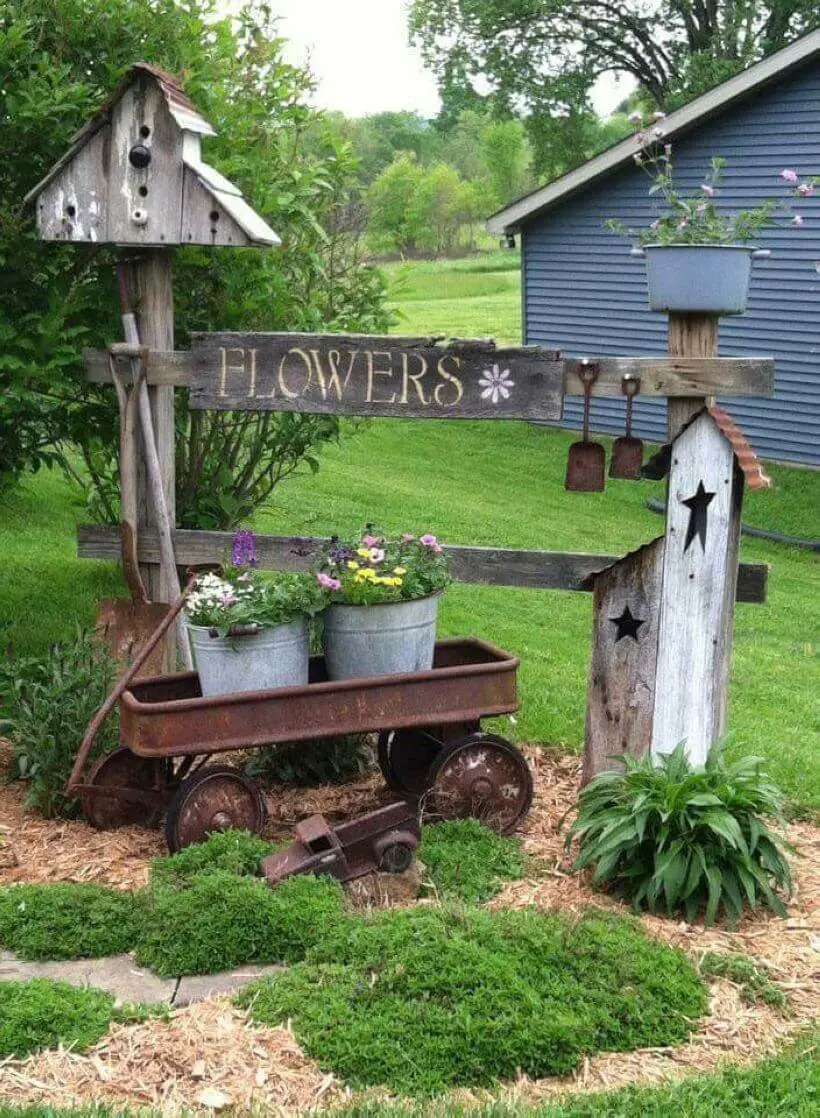
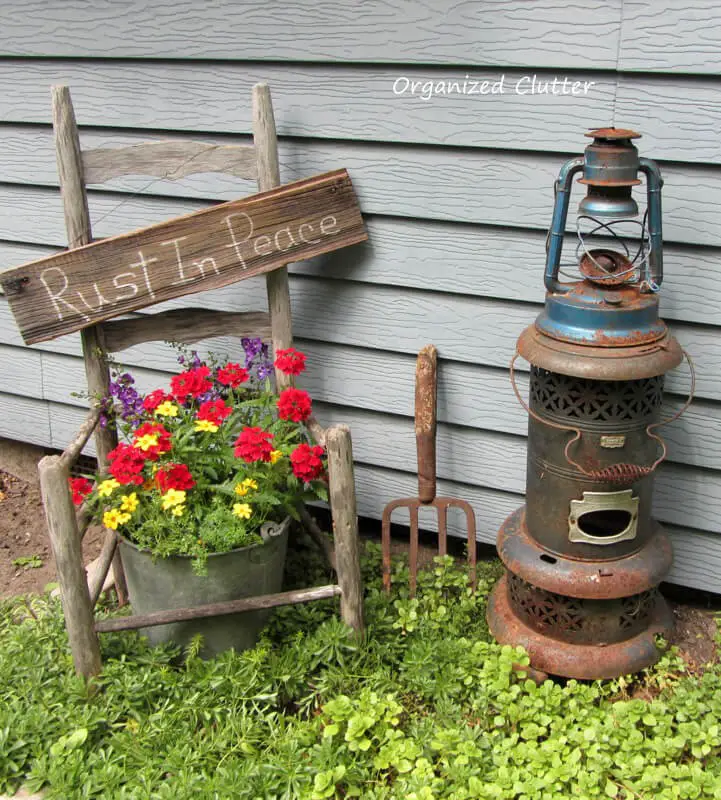
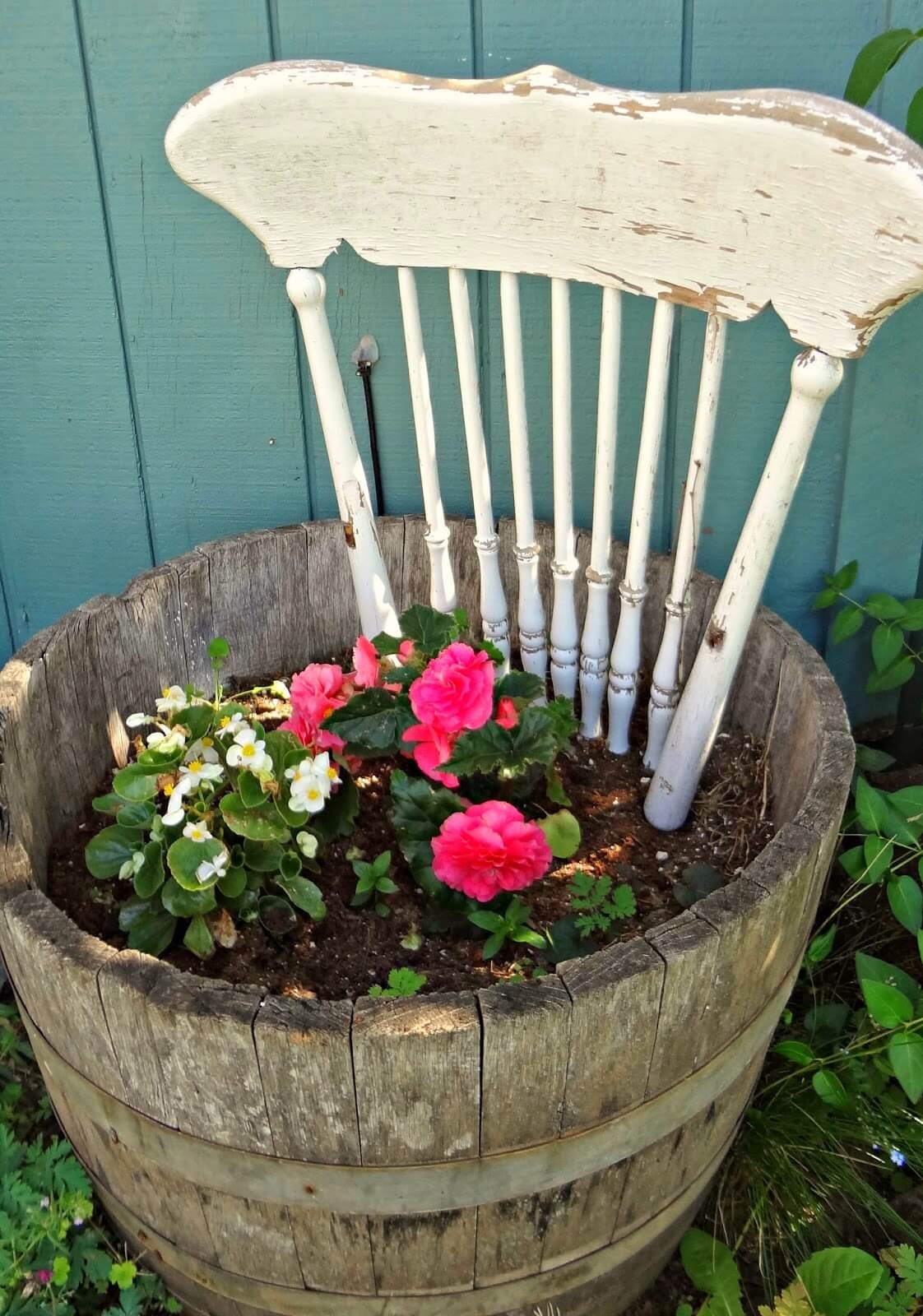
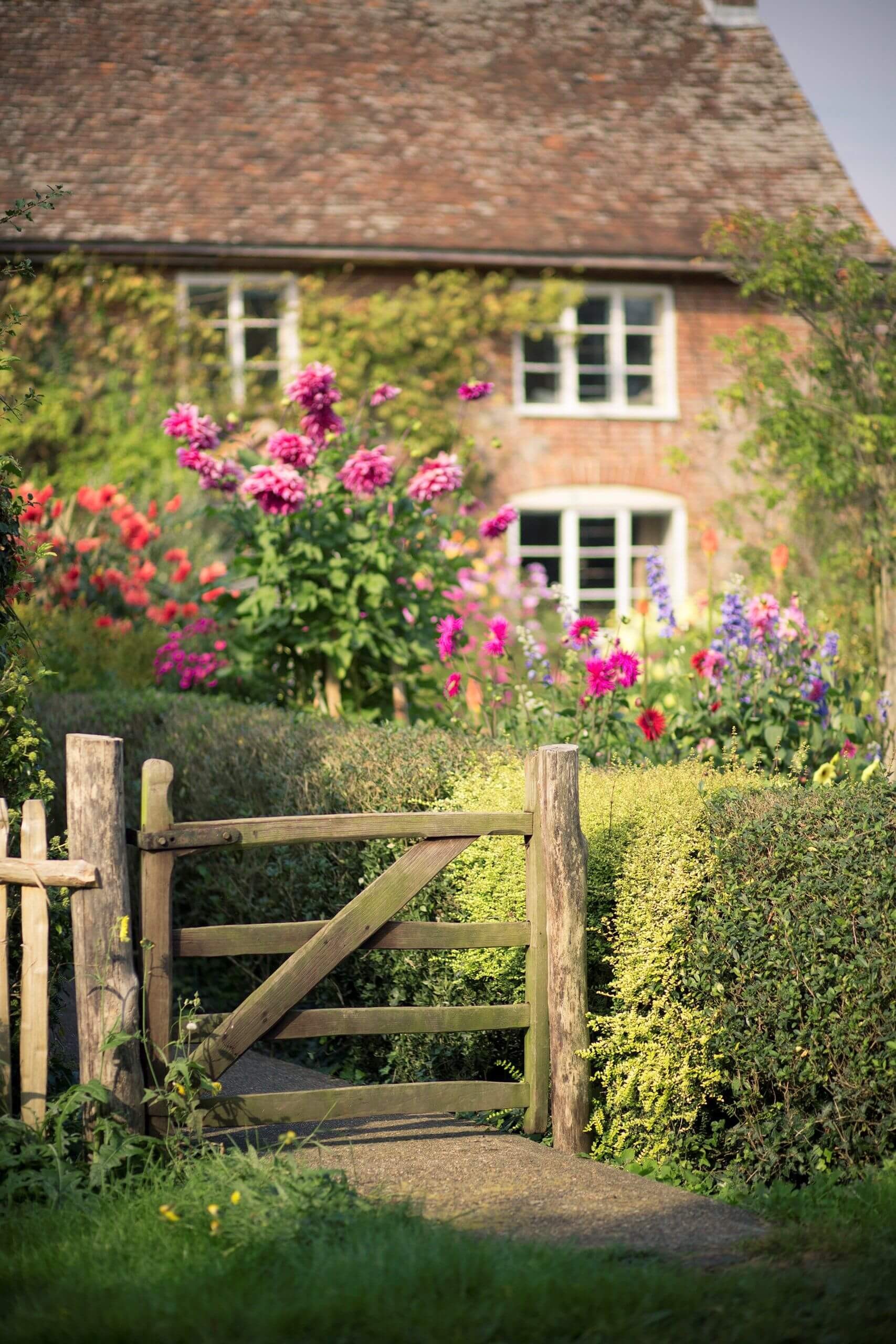
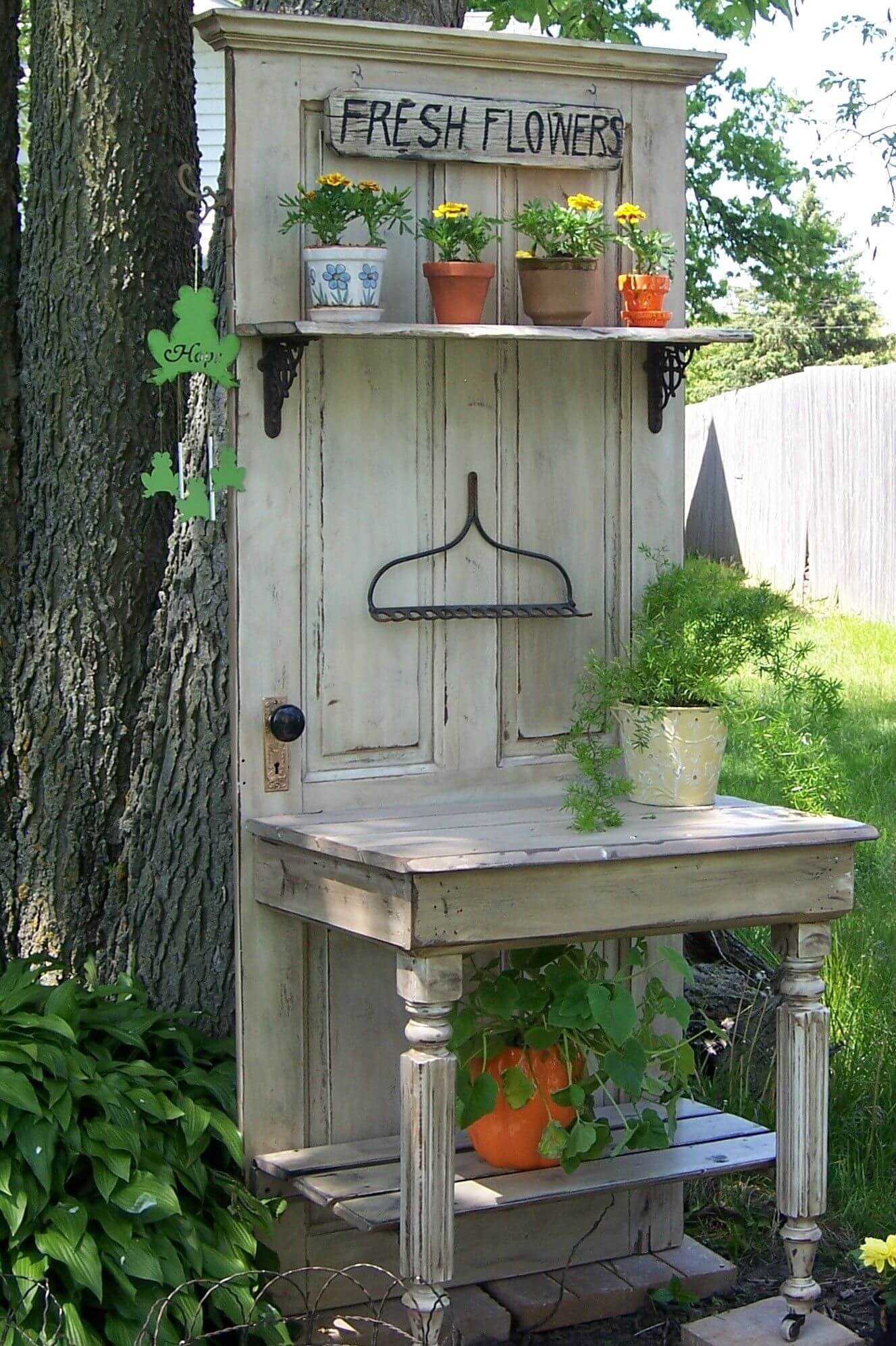
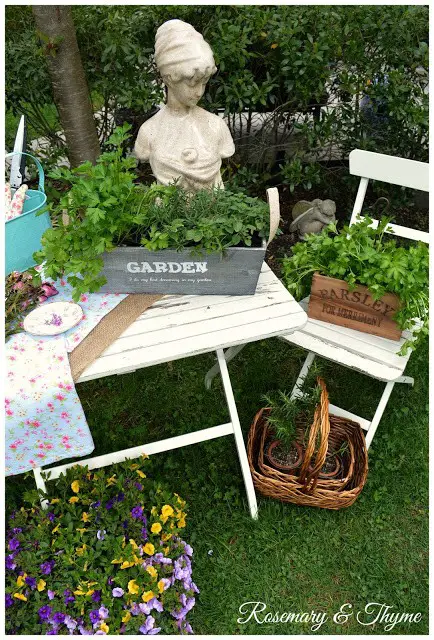
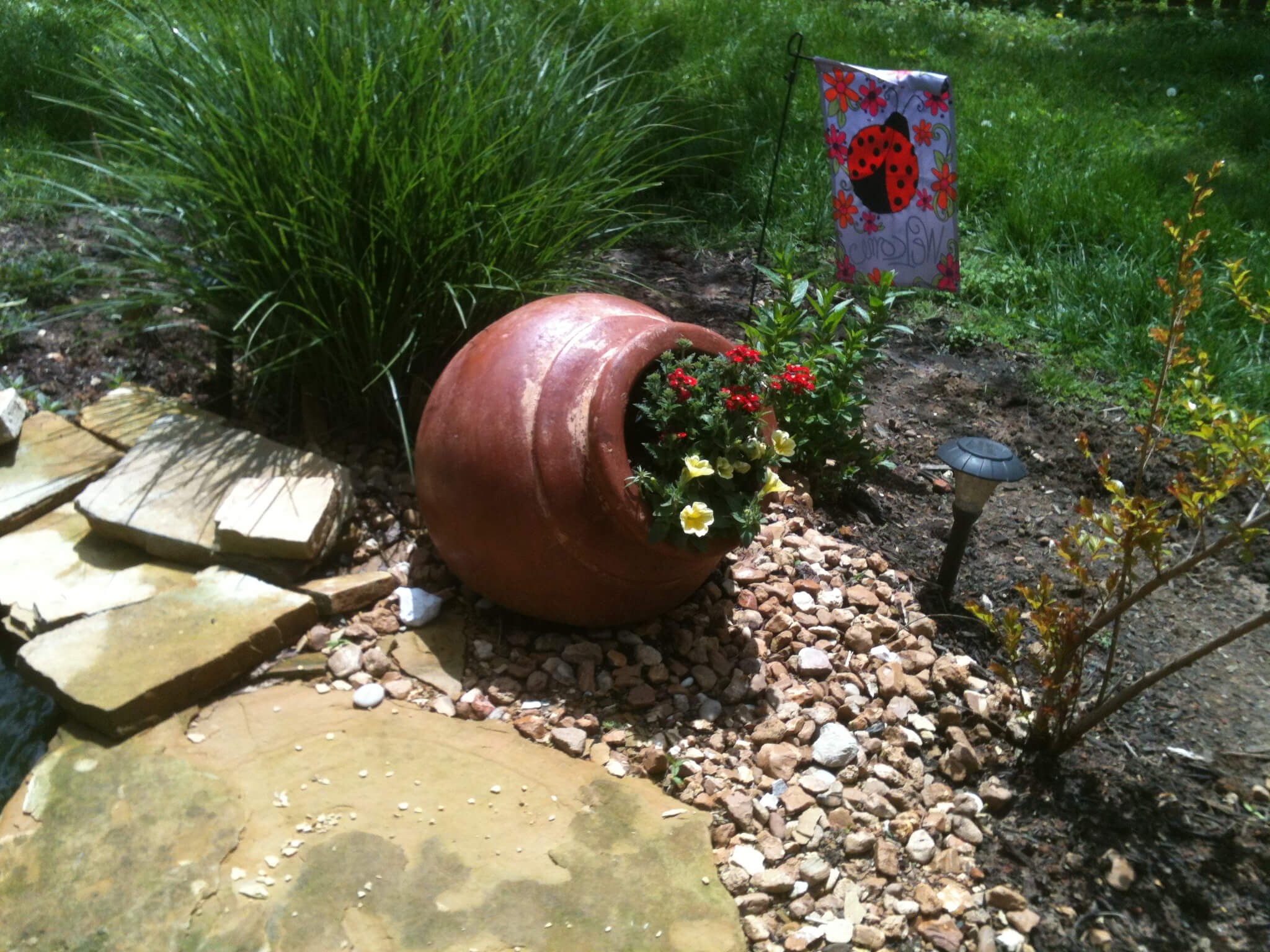
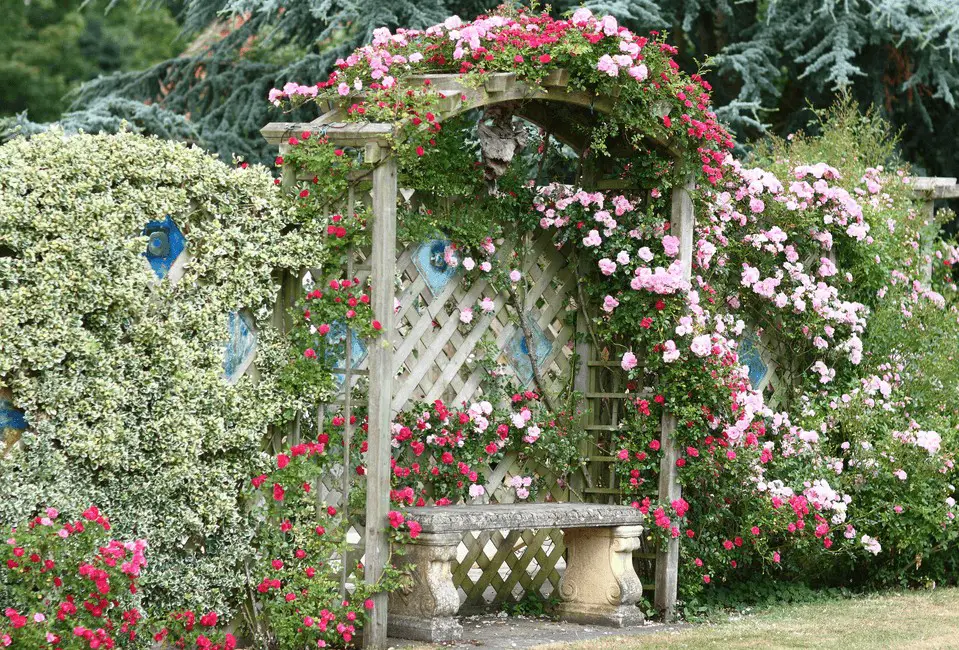
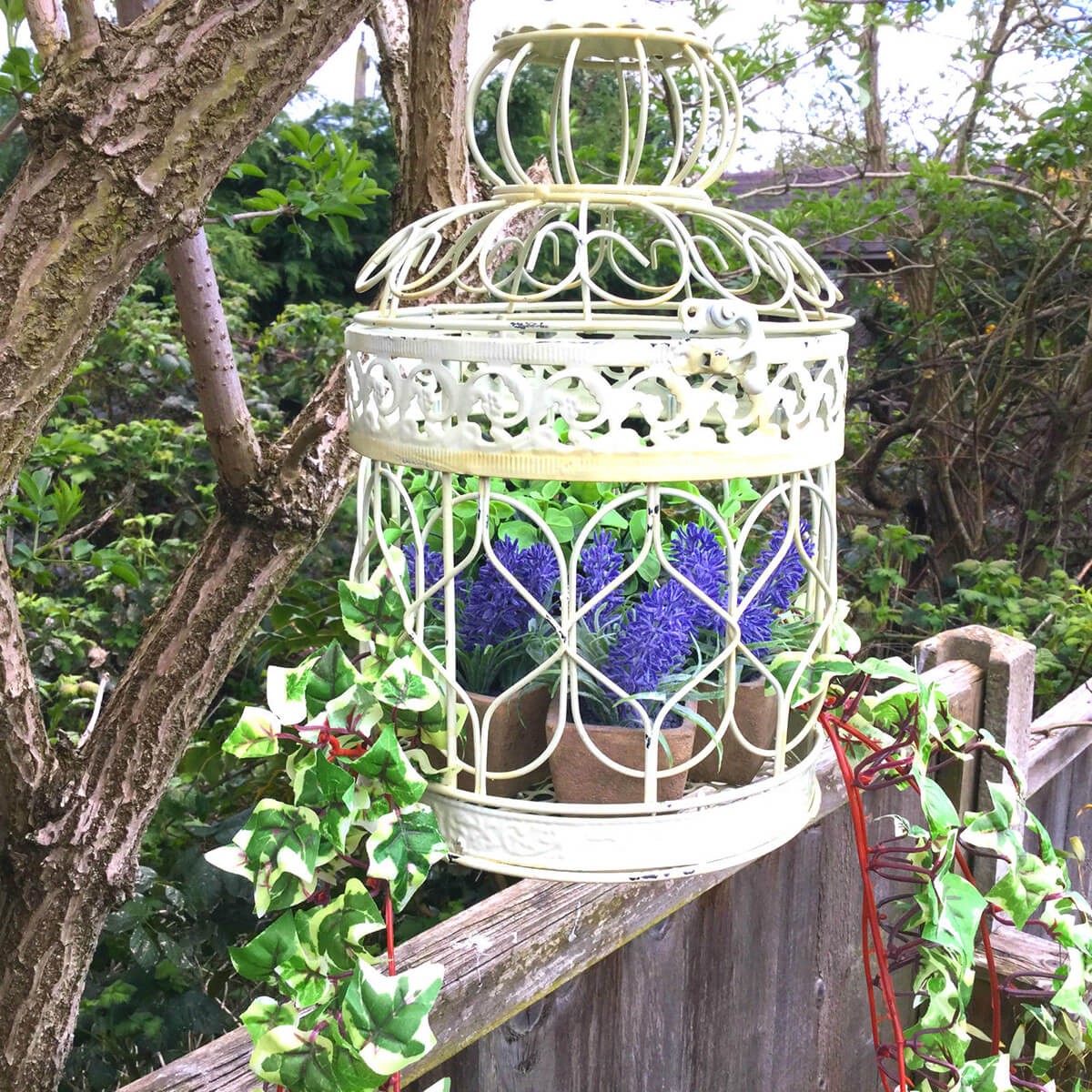

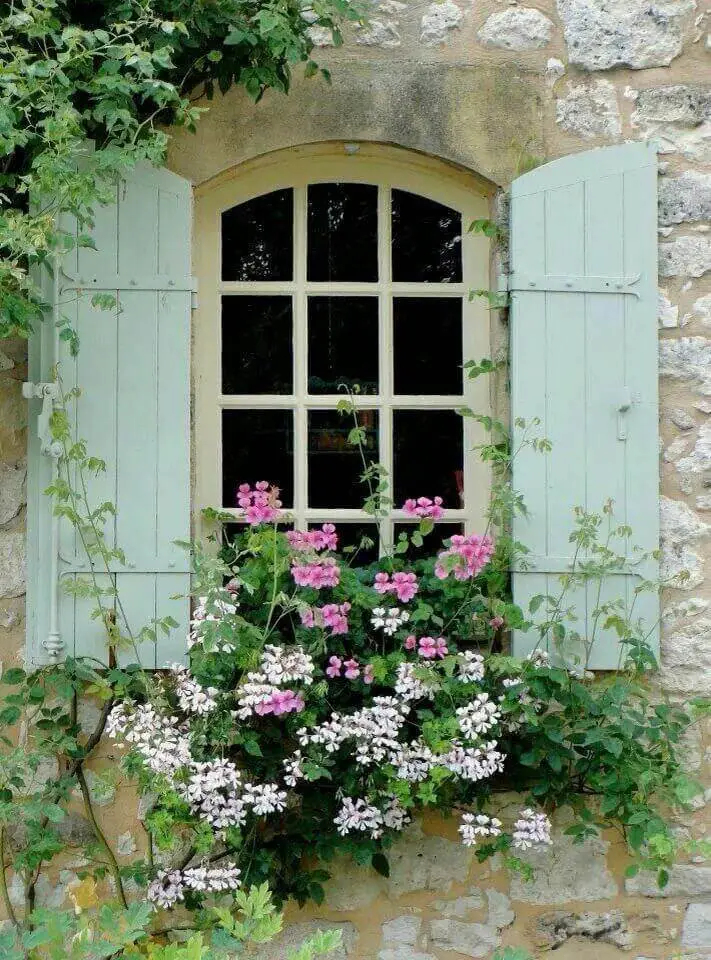
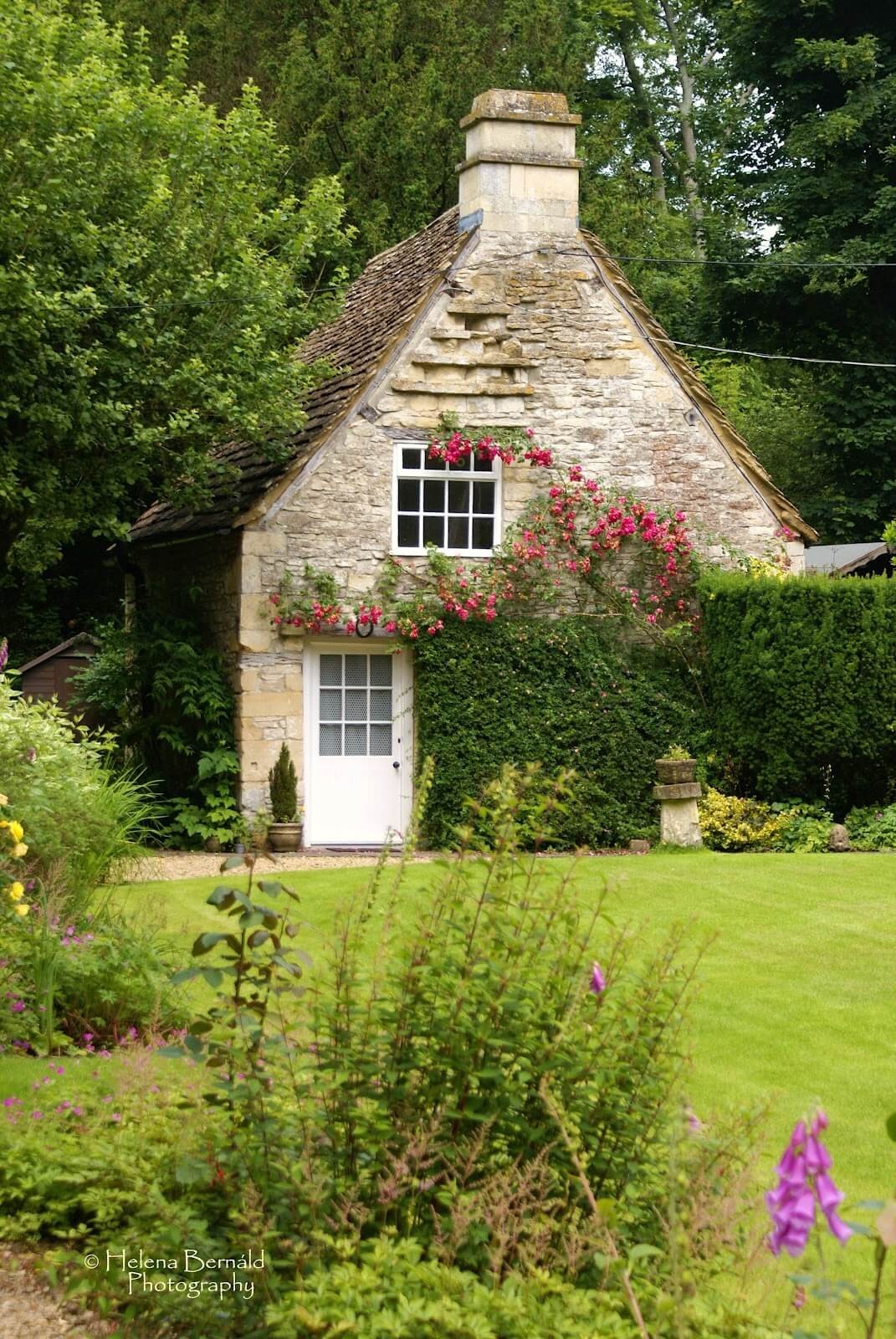
Maintenance Tips for Cottage Gardens
To preserve the whimsical essence of a Cottage Style Garden, it’s crucial to approach its upkeep with precision and care. The goal is to strike a balance between nurturing the lush vegetation and respecting the informal charm that defines this unique gardening style. To achieve this, let’s focus on the key maintenance practices that will keep your garden thriving while maintaining its picturesque allure.
Pruning and Deadheading
To maintain a stunning garden, it’s essential to incorporate regular pruning and deadheading into your routine. These two practices not only promote the overall health of your plants but also extend their blooming periods. Pruning involves removing any dead or overgrown branches and stems, which allows for improved air circulation and encourages healthy new growth to emerge.
On the other hand, deadheading involves carefully removing spent flowers from plants, a process that stimulates additional blooms and prolongs flowering. By adopting these simple yet effective practices, you can keep your garden looking its absolute best.
Managing Growth
To tame the exuberance of a cottage garden, it’s essential to implement thoughtful strategies that balance growth and accessibility. One crucial approach is to ensure each plant has sufficient space to reach its full potential without overwhelming neighboring flora. This can be achieved by providing adequate room between plants for their mature size. Additionally, consider using stakes and trellises to support tall or climbing plants, preventing them from dominating smaller varieties.
By taking these measures, you’ll maintain a harmonious and inviting garden atmosphere.
Dealing with Pests and Diseases
In a cottage garden, pests and diseases can be significant challenges that threaten the health of your plants and the environment. By adopting organic approaches to management, you can effectively mitigate these issues while preserving the well-being of your garden and the planet.
To tackle pests, consider introducing beneficial insects or using neem oil. This natural approach will help reduce pest populations without relying on harsh chemicals.
Similarly, when dealing with diseases, apply organic fungicides and improve air flow to prevent the spread of disease and promote healthy plant growth.
By consistently applying these maintenance tips, you can ensure that your cottage garden remains a beautiful, thriving space that continues to captivate for years to come. It’s essential to understand the unique needs of each plant species and provide them with the necessary care, patience, and attention.
Conclusion

Cottage gardens embody the serenity and vibrancy that nature can infuse into our daily lives. With their meandering paths, lush plant diversity, and whimsical decorative elements, they provide a haven for both humans and wildlife to thrive. These gardens serve as a poignant reminder of nature’s simplicity and abundance, transforming ordinary outdoor spaces into enchanting retreats.
Creating a Cottage Style Garden is an organic process that doesn’t demand instant perfection or grandiose beginnings. Begin with a small corner or a few planters, allowing your garden to unfold naturally over time. Each season can bring new discoveries and additions, as your garden grows in tandem with you. The essence of a cottage garden lies in its capacity for evolution and adaptation, reflecting the unique vision of its creator and the dynamic tapestry of life.
By taking that first step and planting a seed, you’ll watch your garden – and your connection to the natural world – flourish.
FAQs: Cottage-Style Garden Ideas
What is a cottage-style garden?
Characterized by its carefree essence, a cottage-style garden defies traditional notions of landscaping with an unbridled celebration of nature’s diversity. In this picturesque setting, a medley of flora and fauna are artfully mingled to create a dense tapestry of textures, hues, and silhouettes, where the boundaries between flowers, herbs, and vegetables blur in a lush, unstructured expanse.
The resulting ambiance is at once romantic, whimsical, and inviting, with an emphasis on profusion and a laid-back charm that embodies the very essence of effortless elegance.
Can I create a cottage garden in a small space?
Regardless of the size of your outdoor space, you can create a charming cottage garden by focusing on layering plants in containers or raised beds. To achieve this lush and overflowing look, choose plant varieties that thrive in smaller areas, such as compact blooms and trailing vines. This adaptable approach allows for a beautiful and vibrant cottage garden, even in the most modest of outdoor spaces.
How do I maintain a cottage garden?
Maintaining a cottage garden’s effortless charm requires a bit of discipline and attention to detail. Rather than adopting a laissez-faire approach, it’s essential to implement regular upkeep tasks that promote healthy plant growth, prevent overcrowding, and tackle any pest or disease issues that may arise.
This includes pruning and deadheading to stimulate more blooms, carefully controlling the spread of plants to maintain an attractive, airy feel, and employing organic solutions whenever possible to minimize harm to the environment.
Can a cottage garden attract wildlife?
Transforming your cottage garden into a thriving haven for wildlife is a rewarding experience. By incorporating a diverse array of native plants, you’ll attract a range of species including birds, bees, and butterflies. This synergy can be further enhanced by installing birdbaths to provide sources of water and adopting an organic approach by refraining from using harmful chemicals.
As your garden flourishes, it will not only become a haven for beneficial wildlife but also add to its charm and vitality, making it a truly unique and captivating space.

